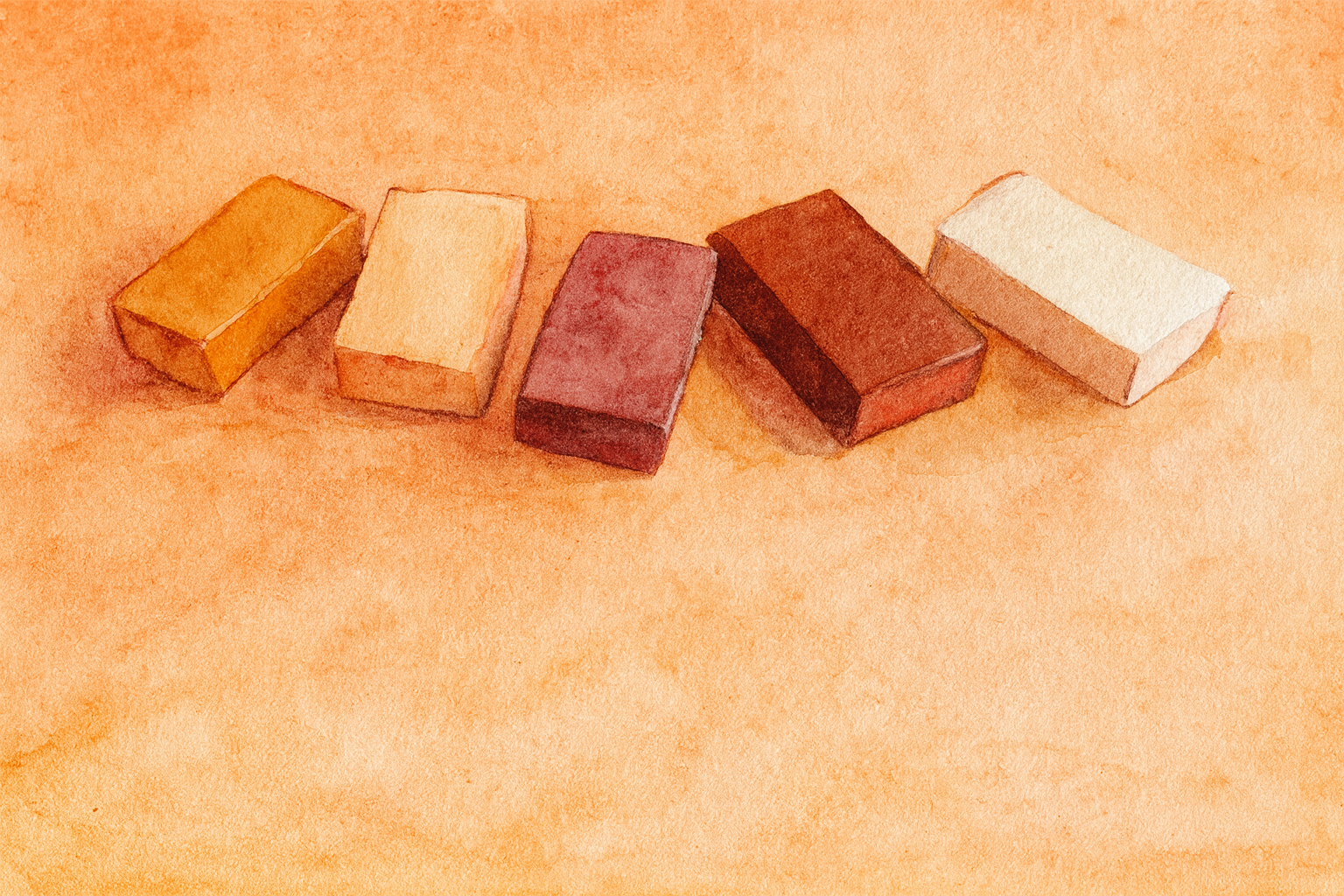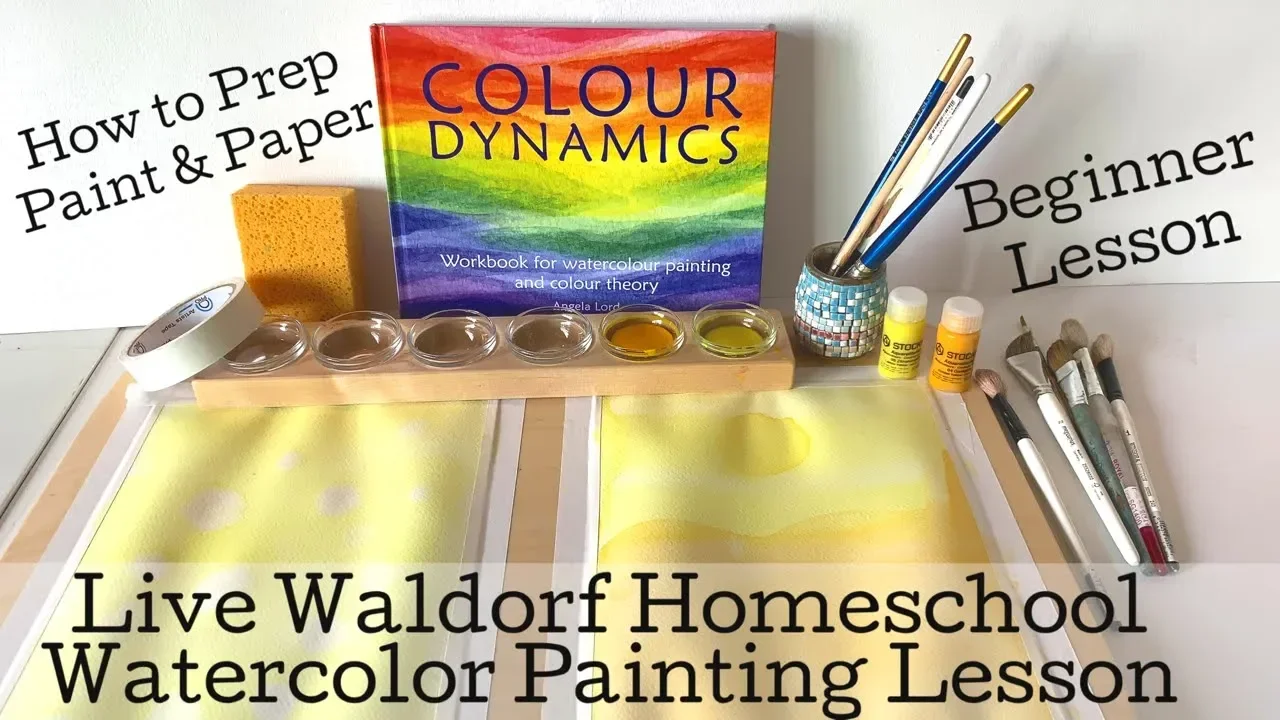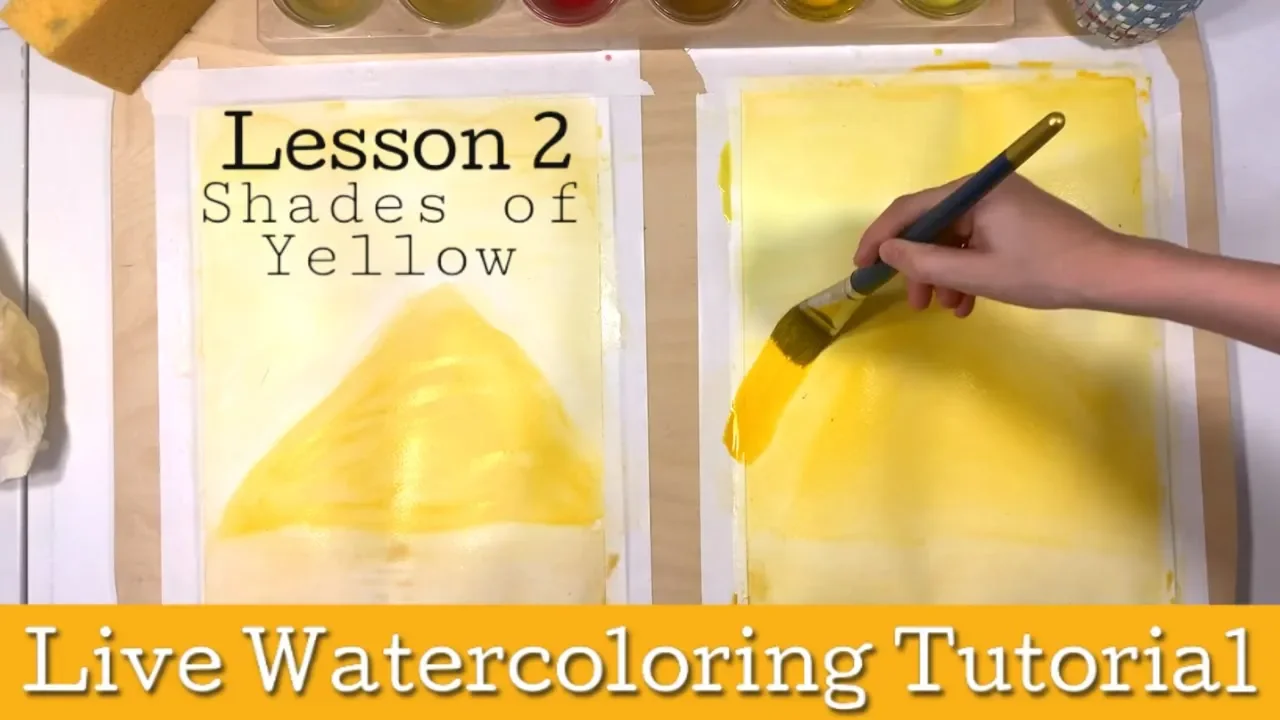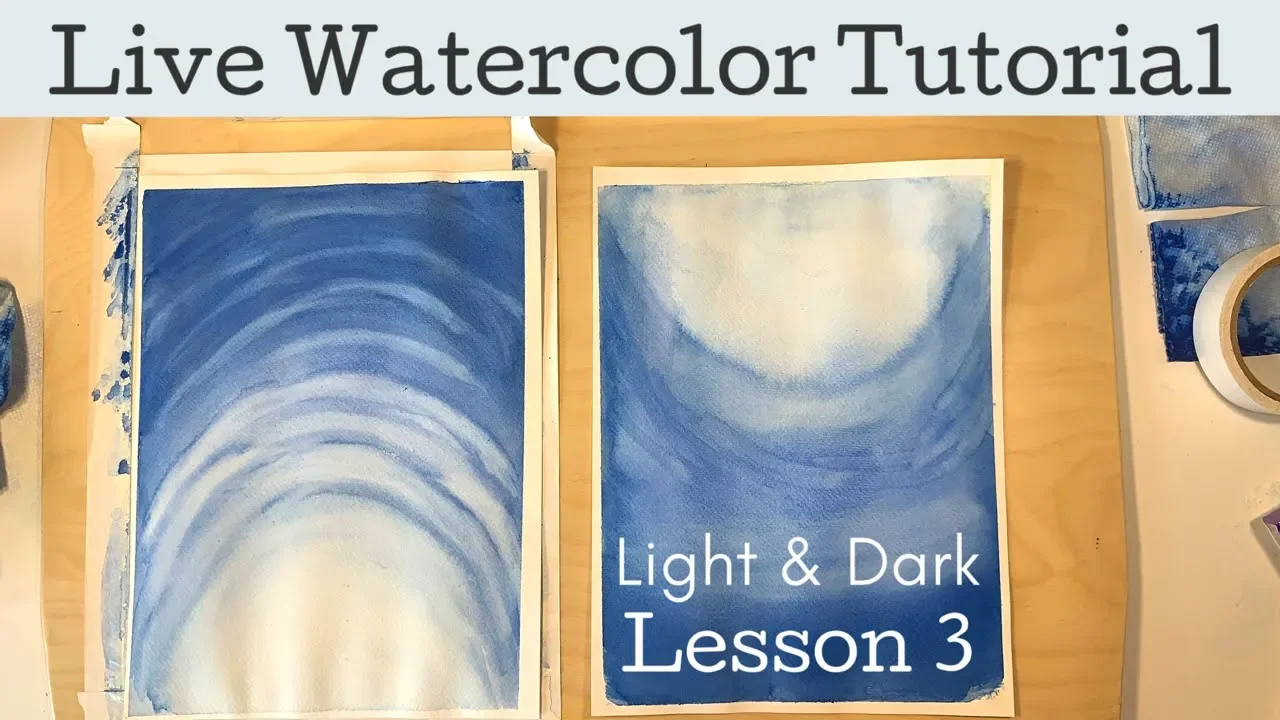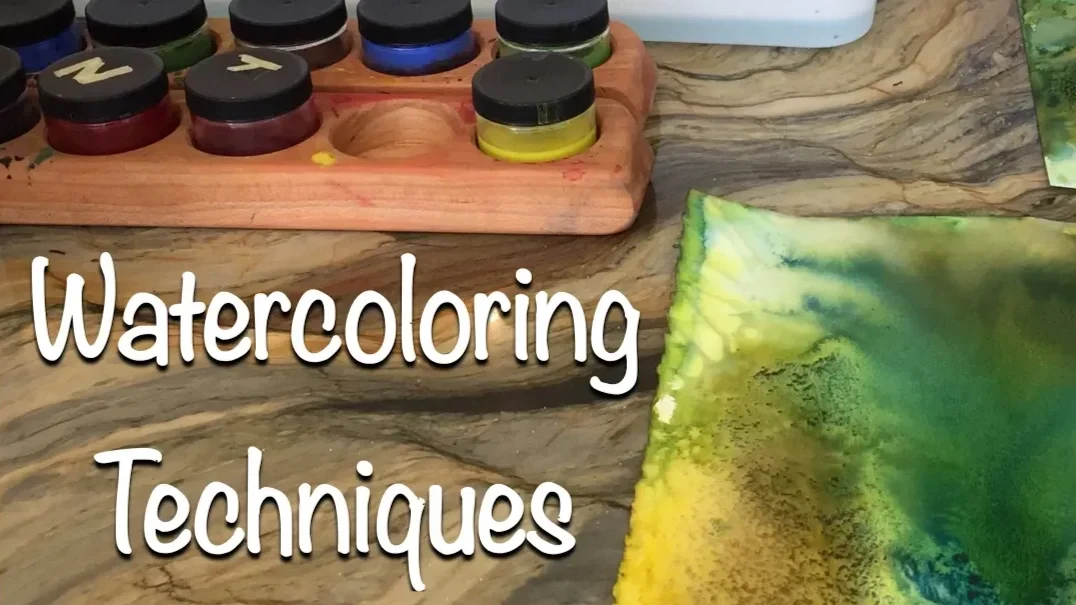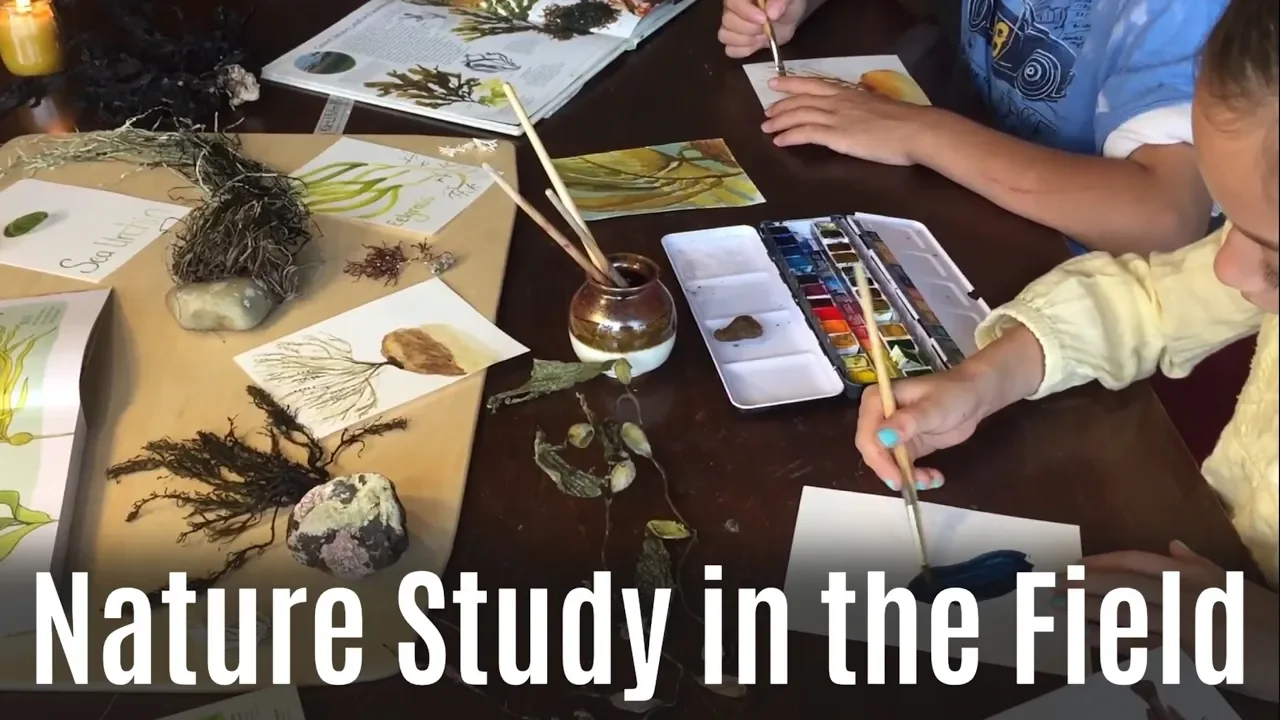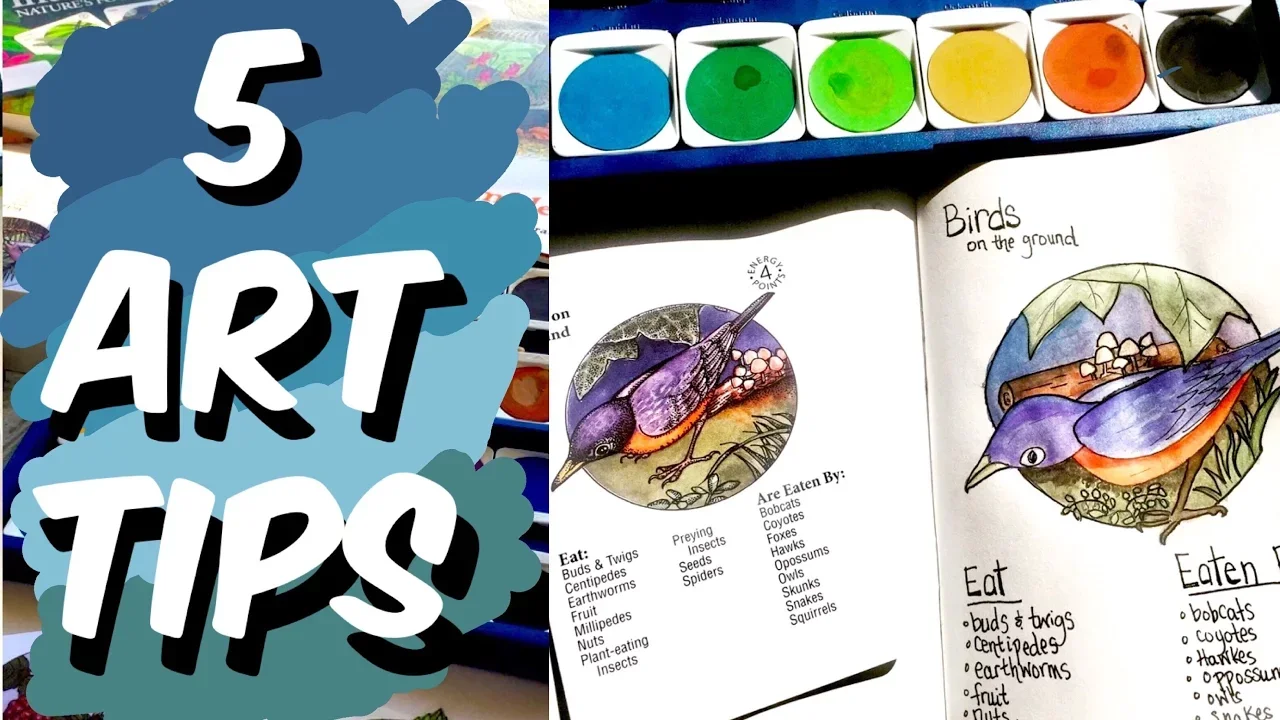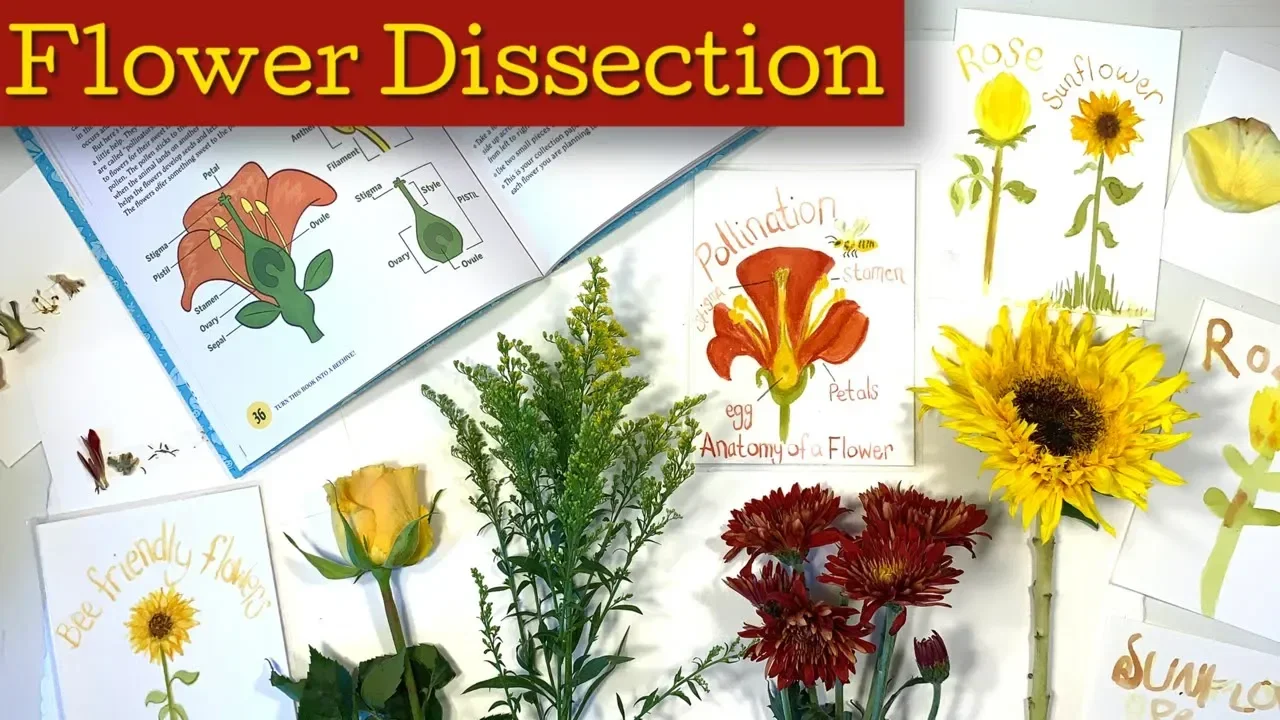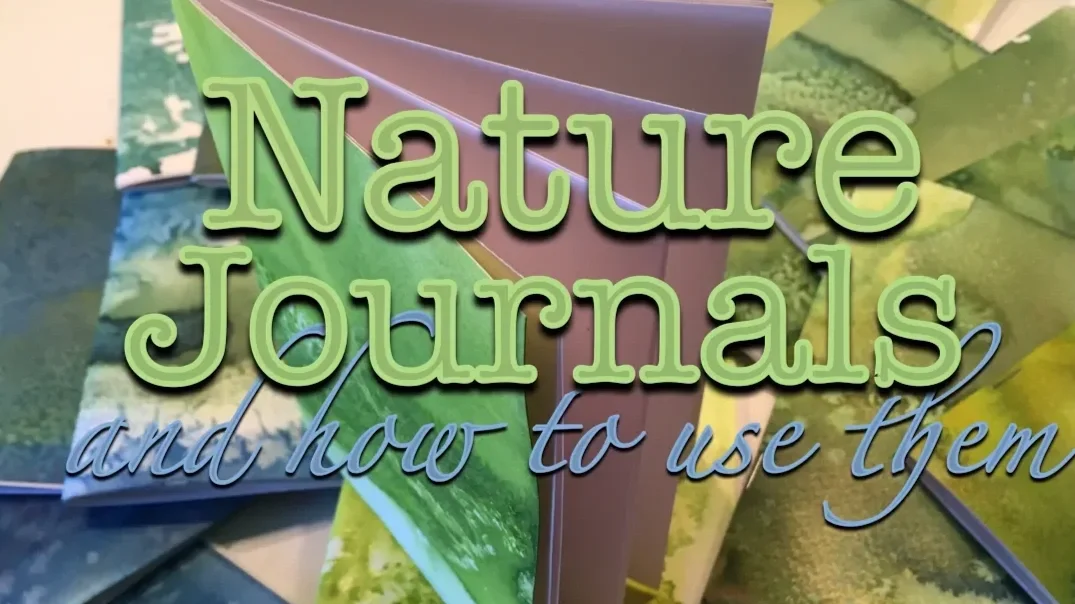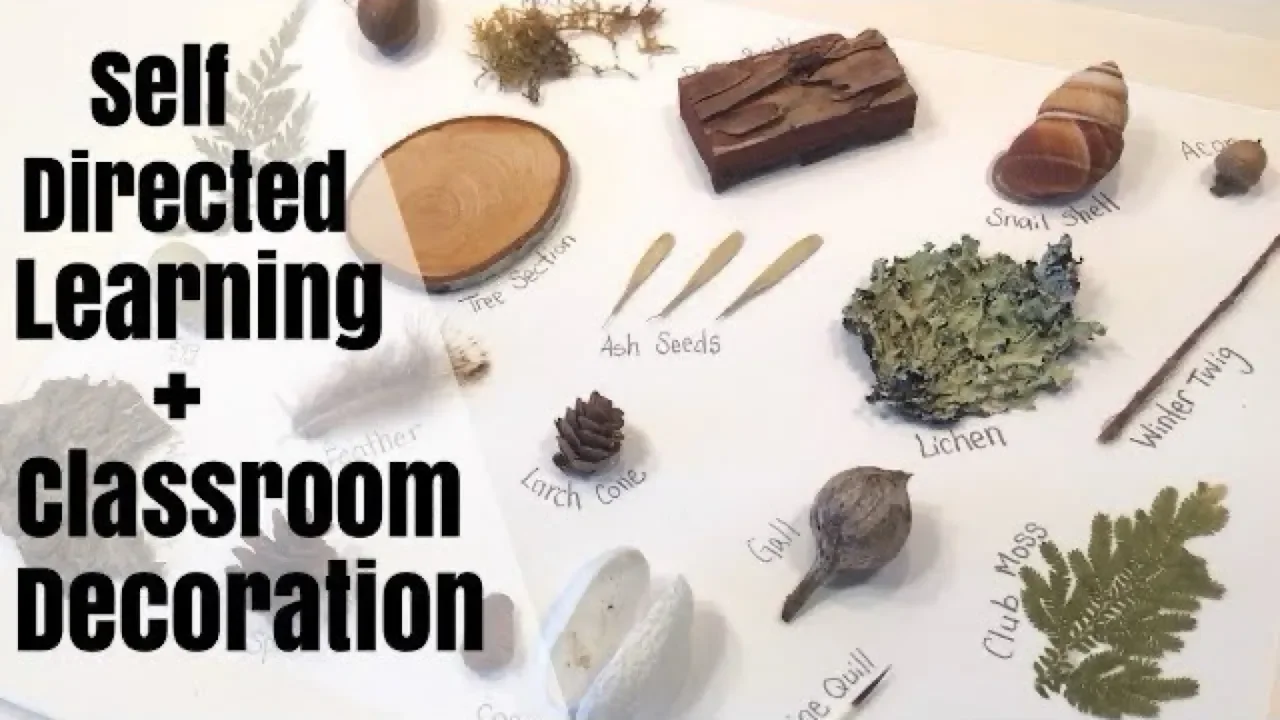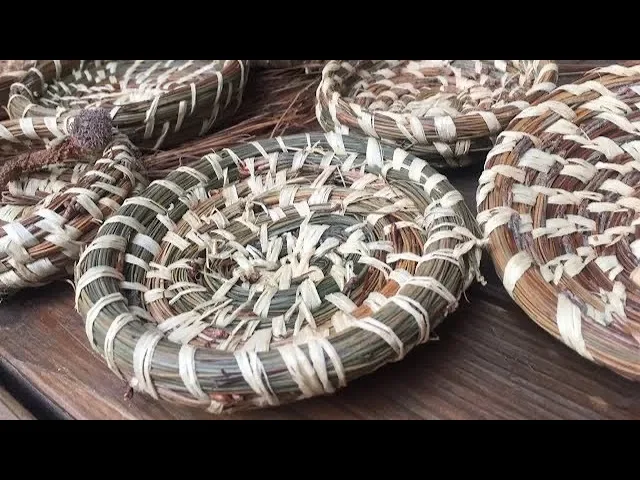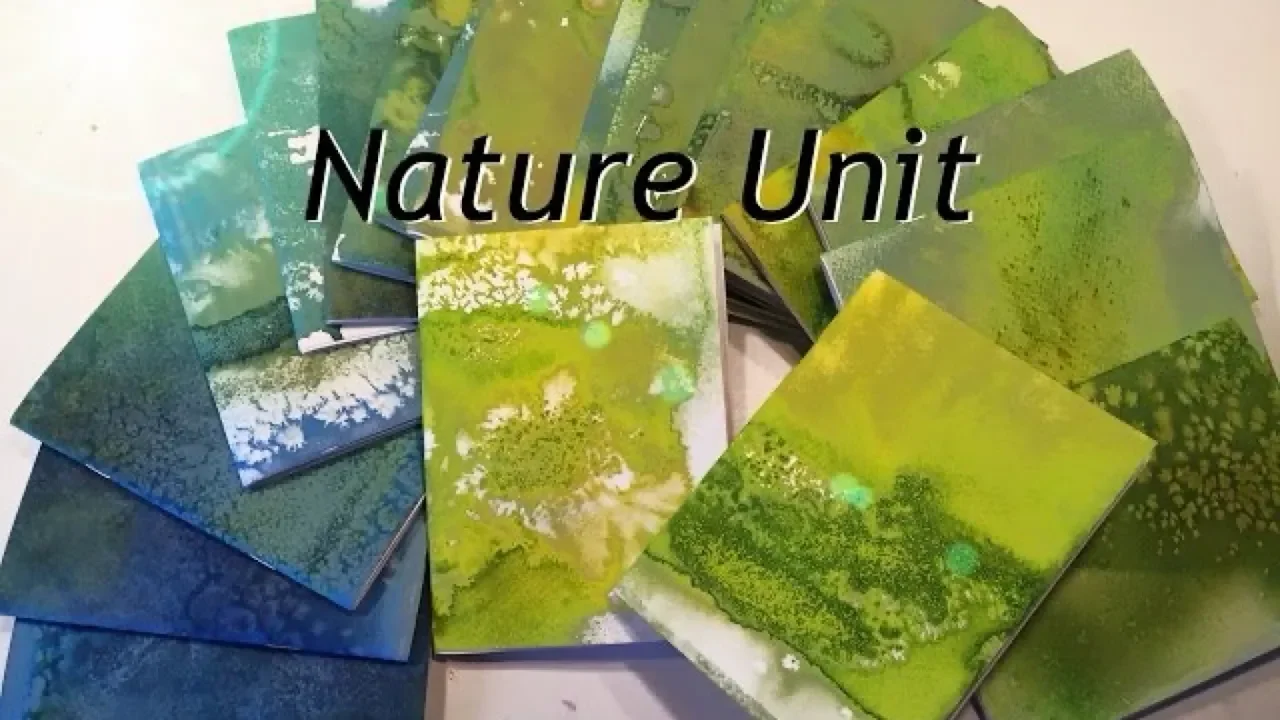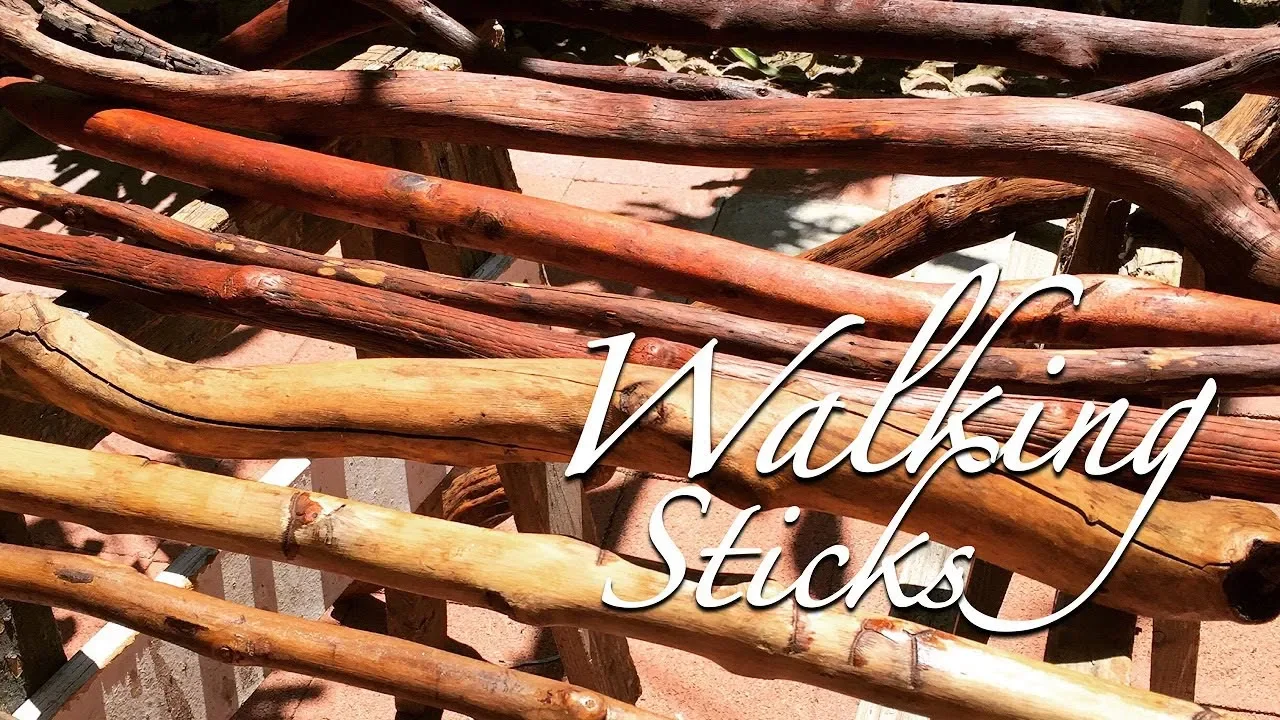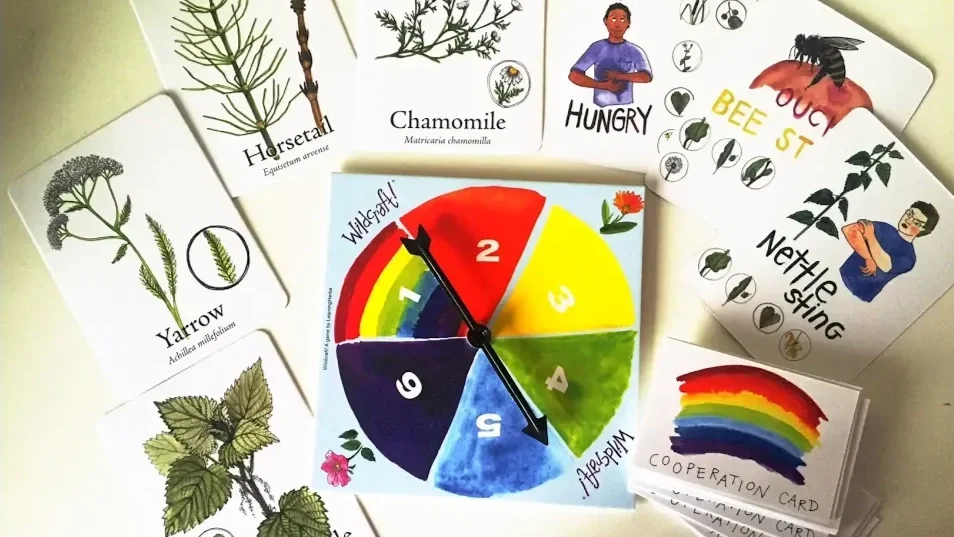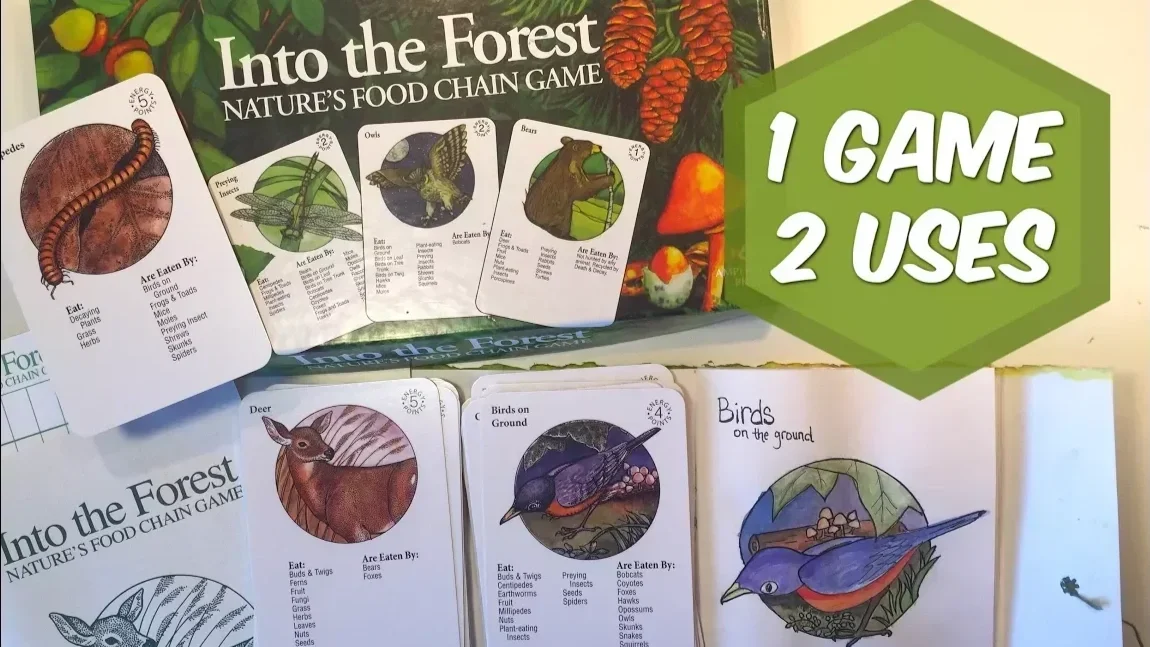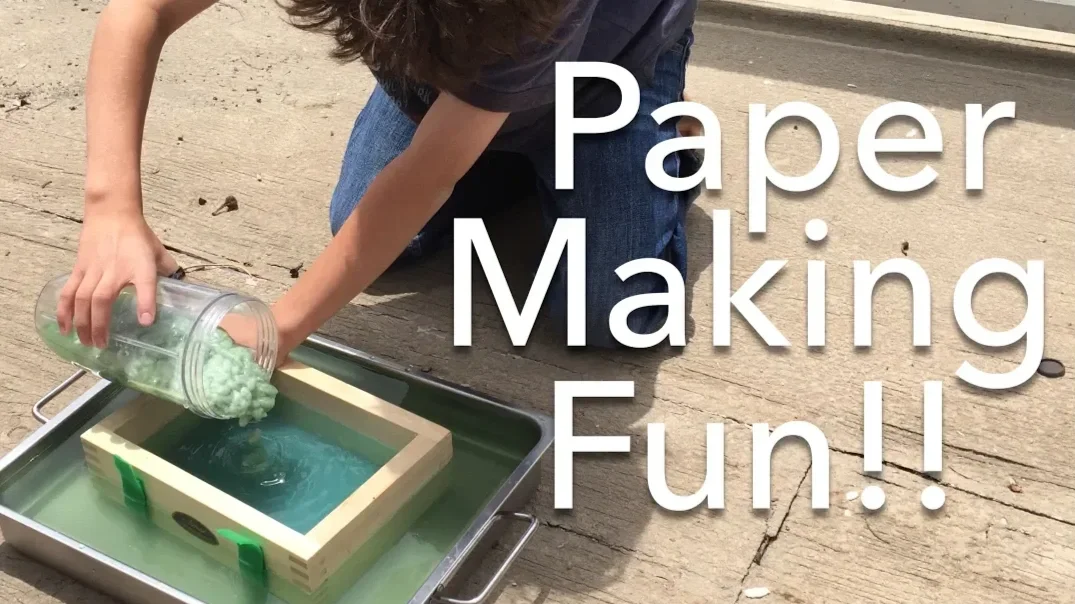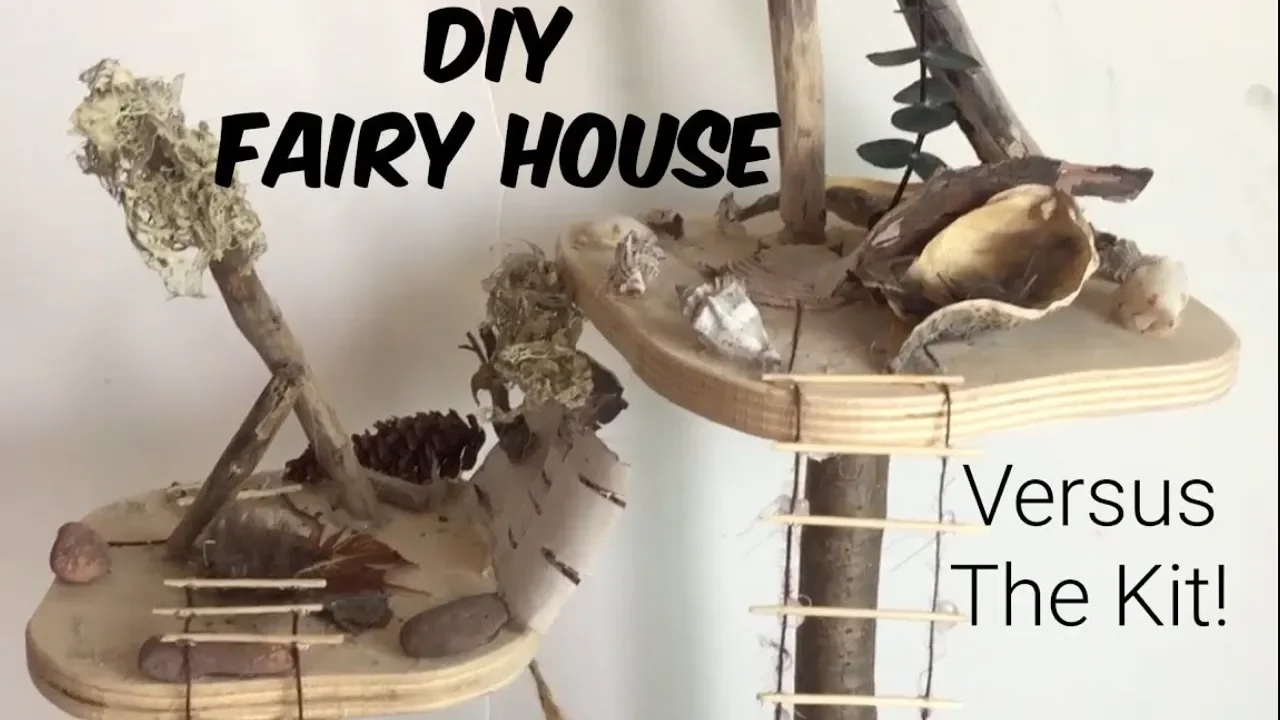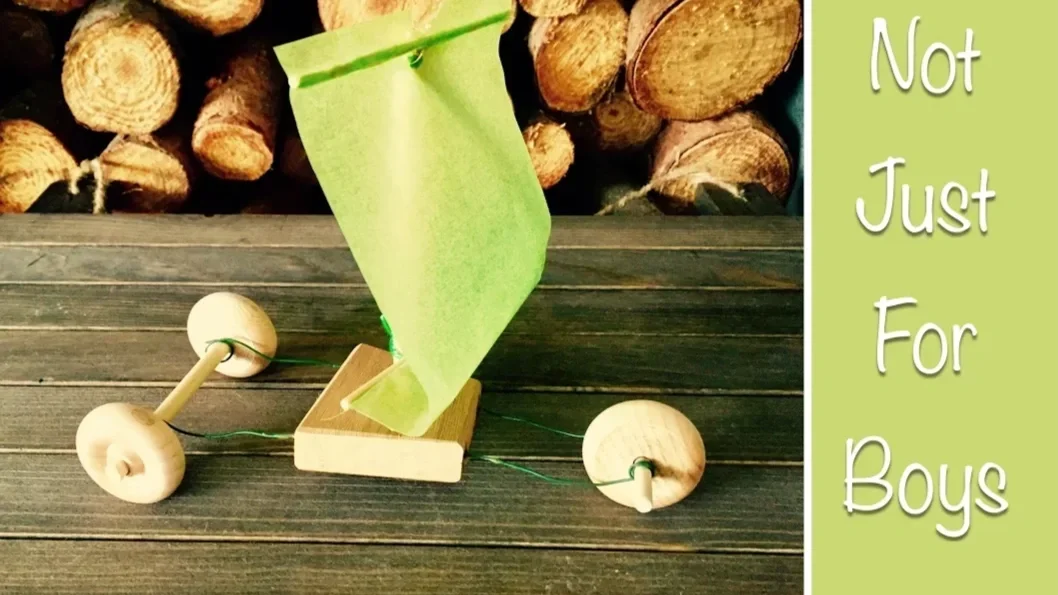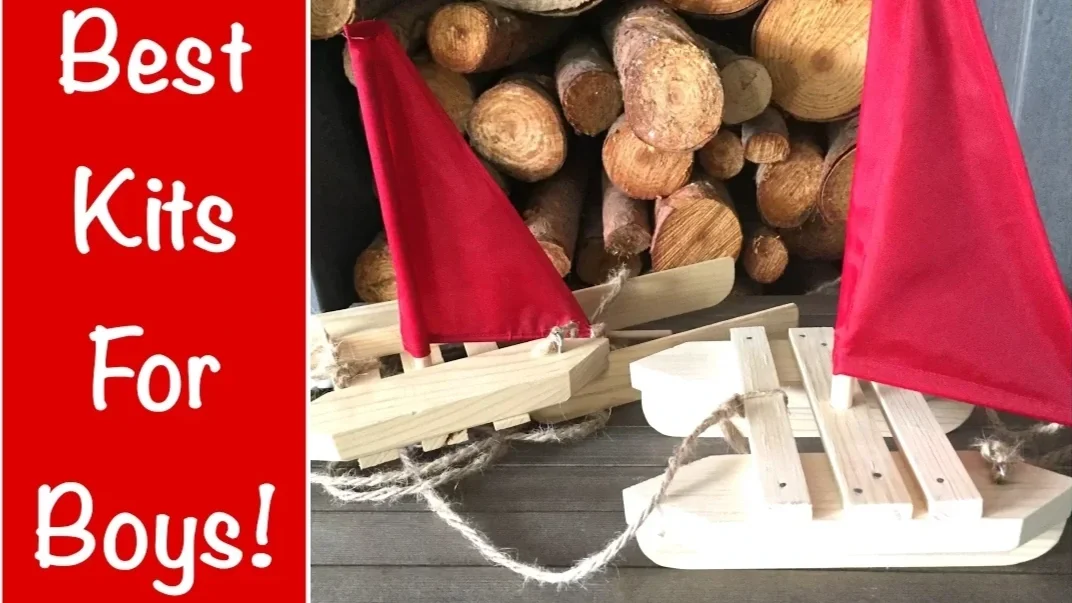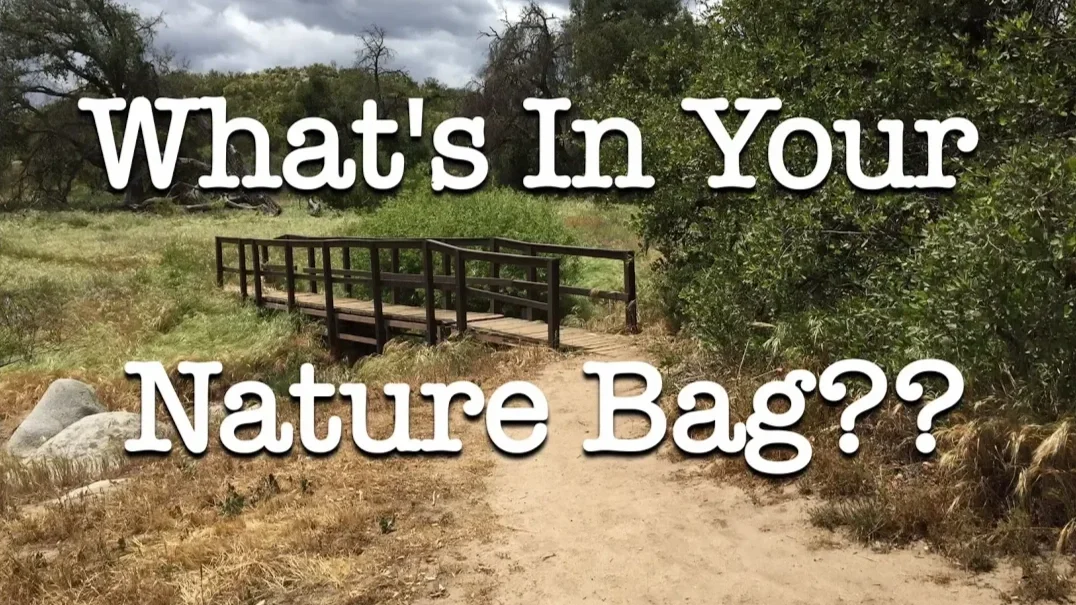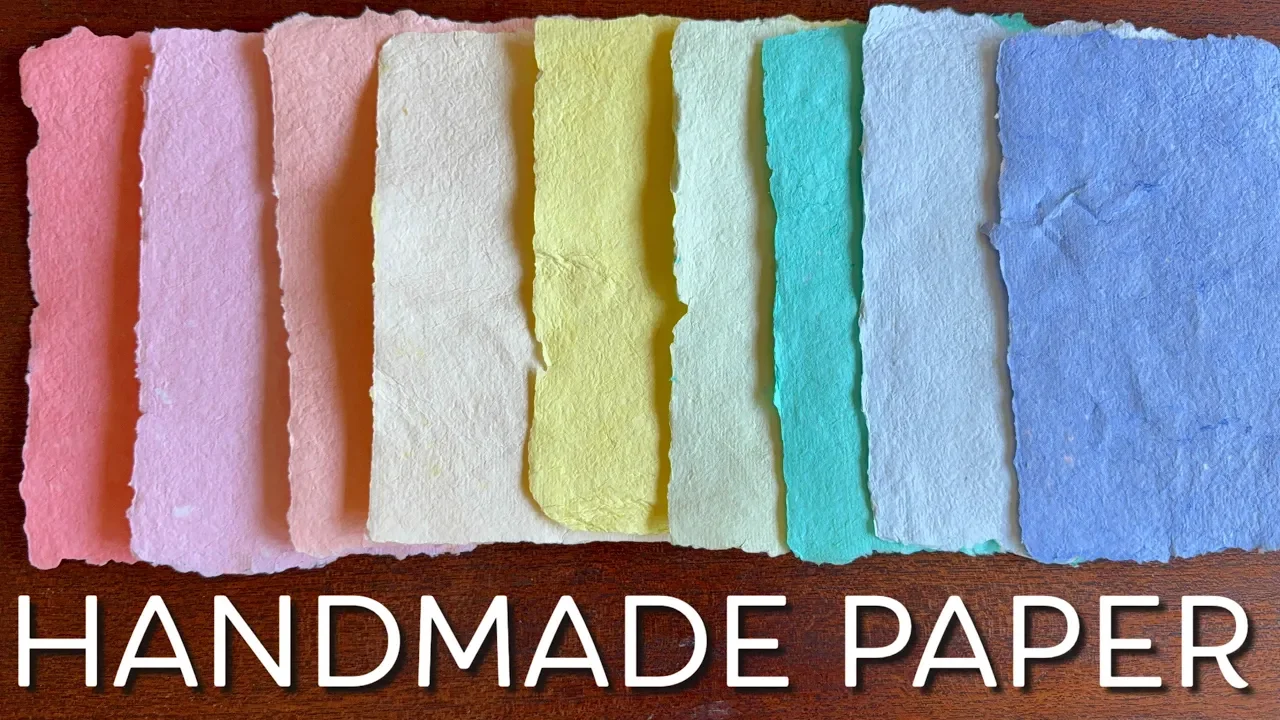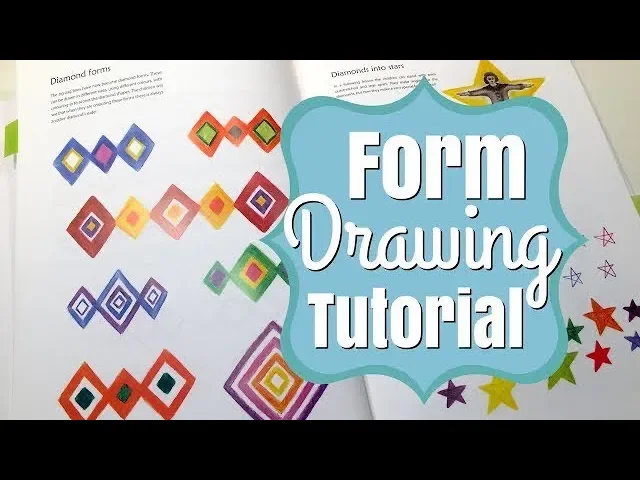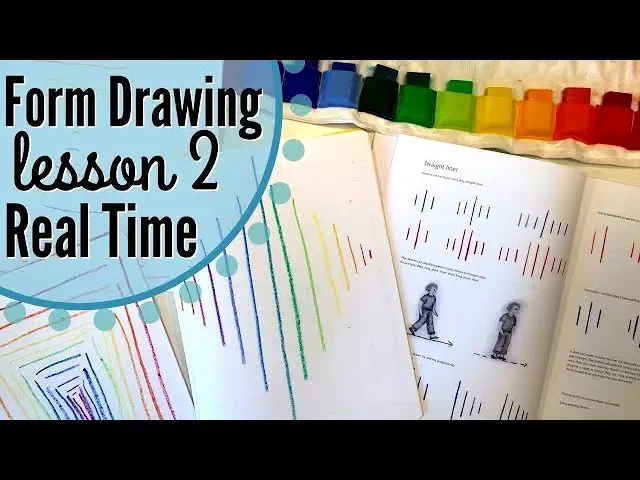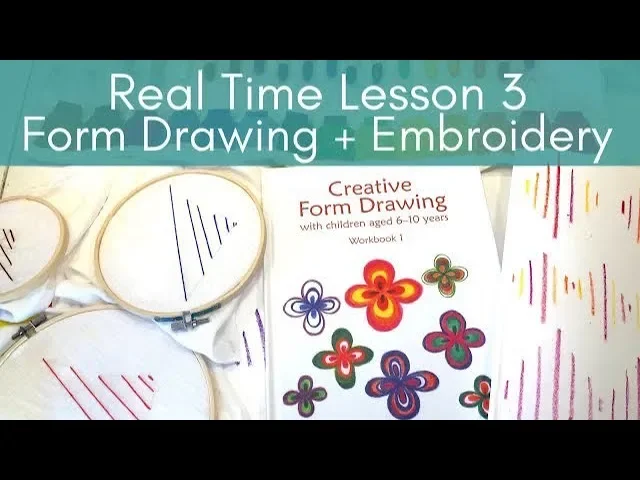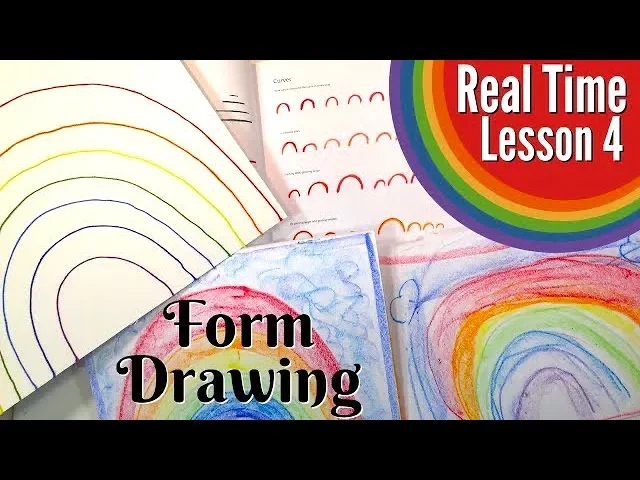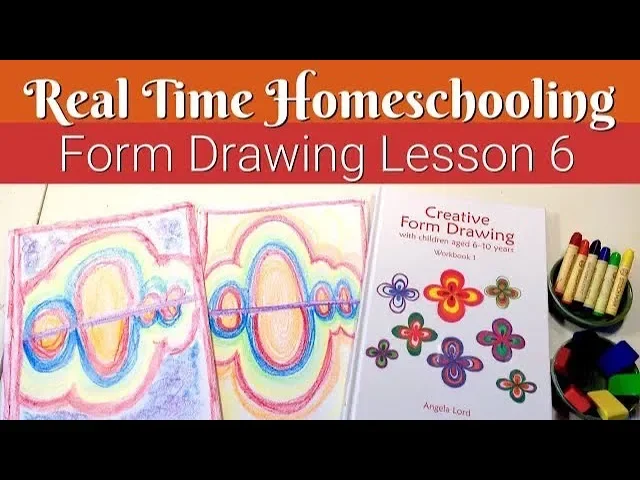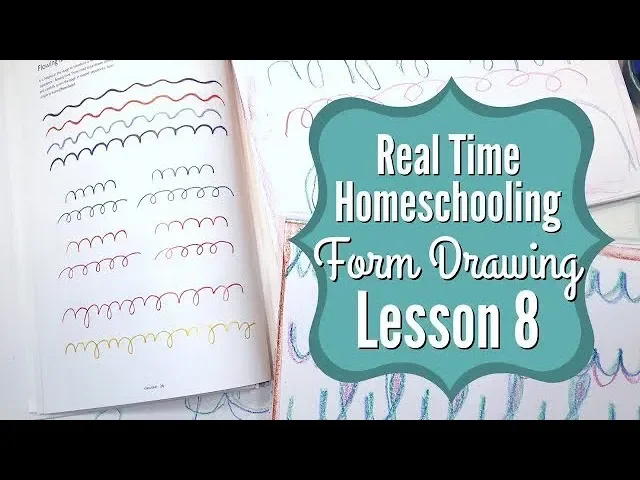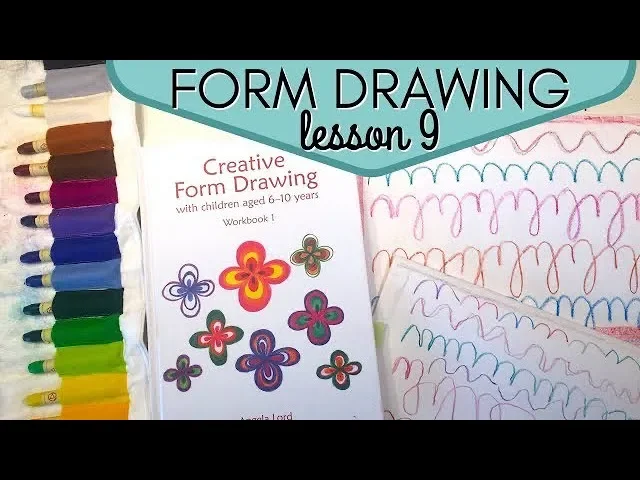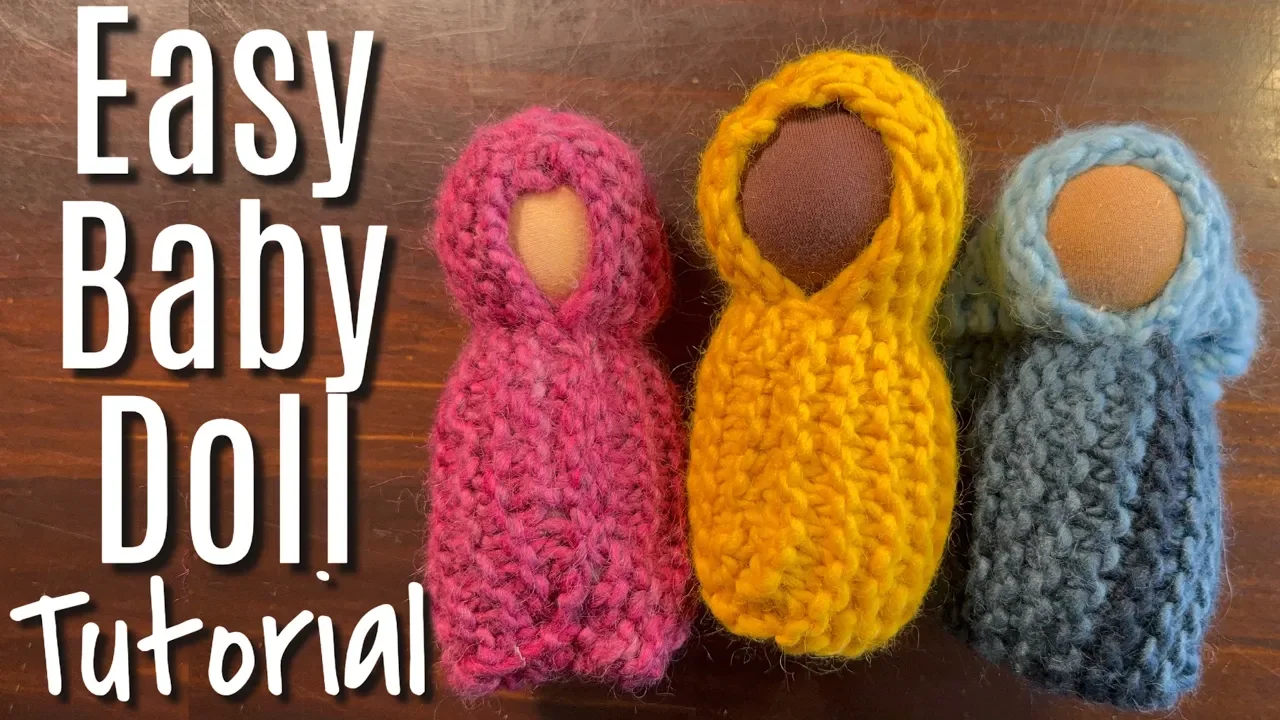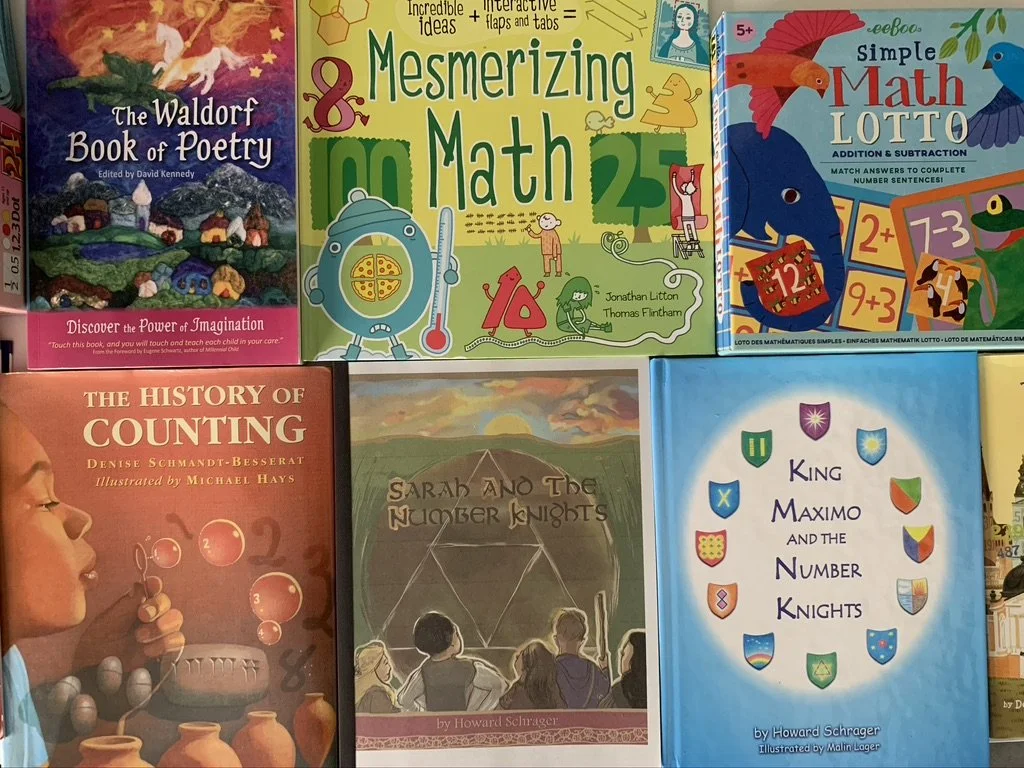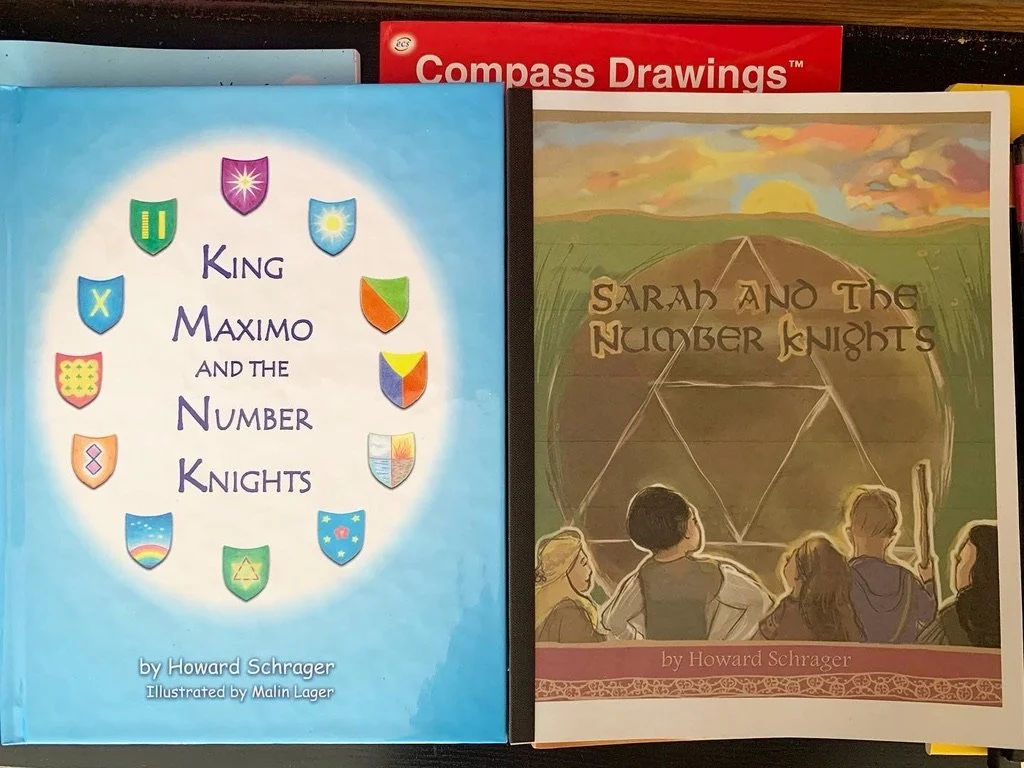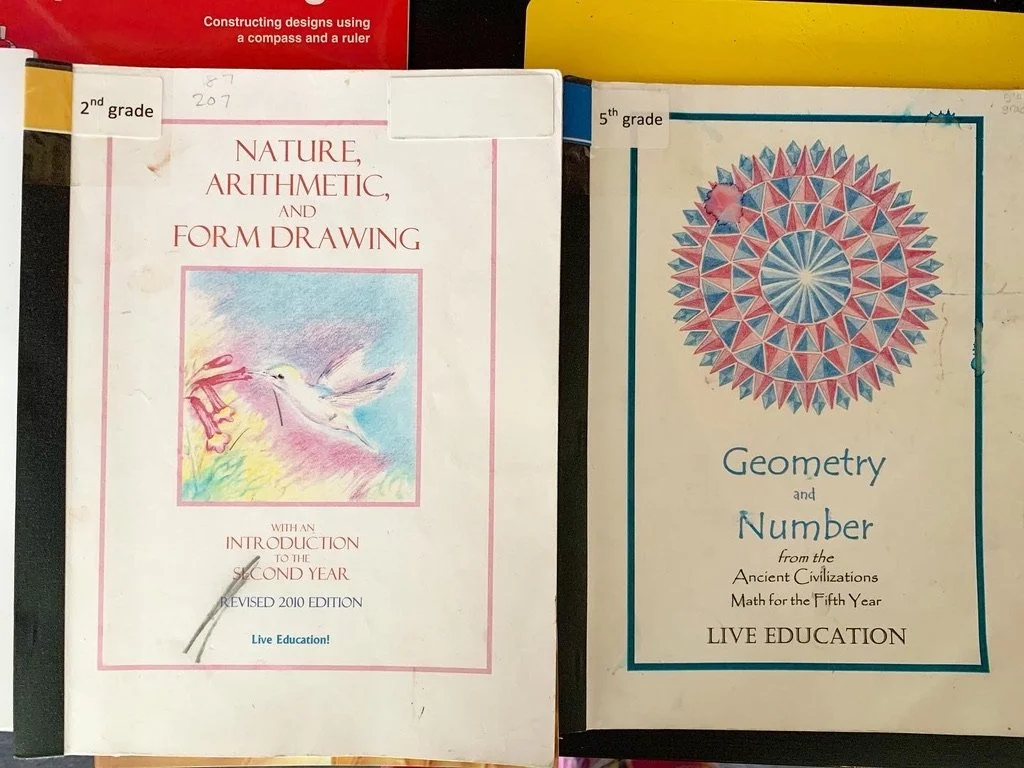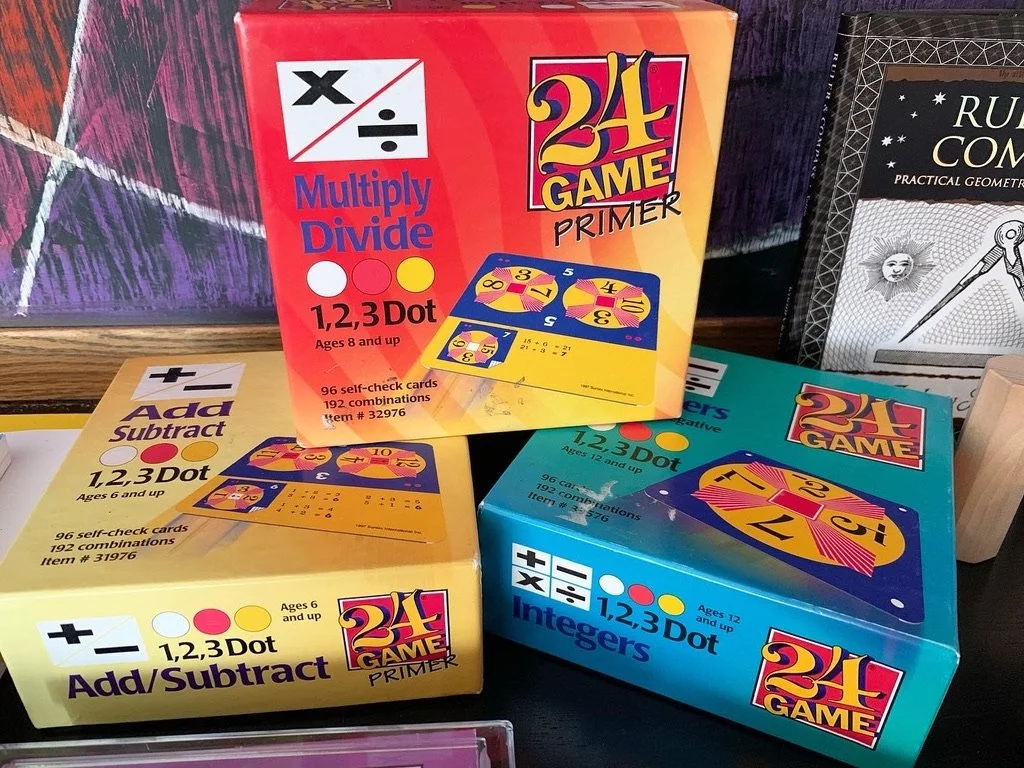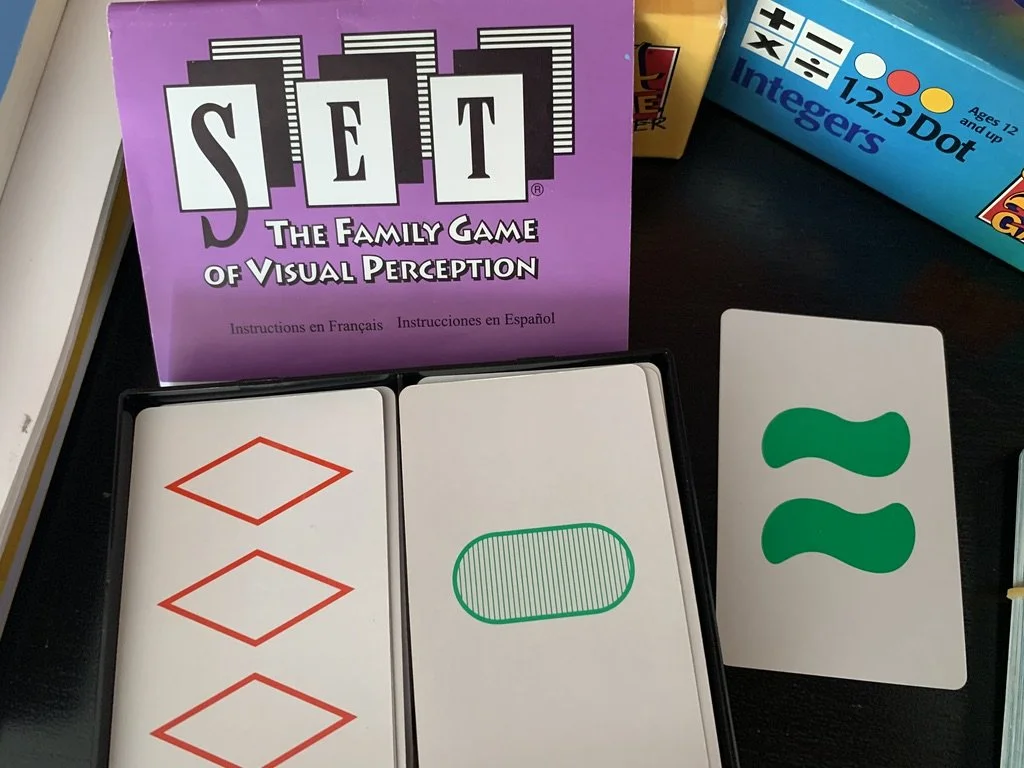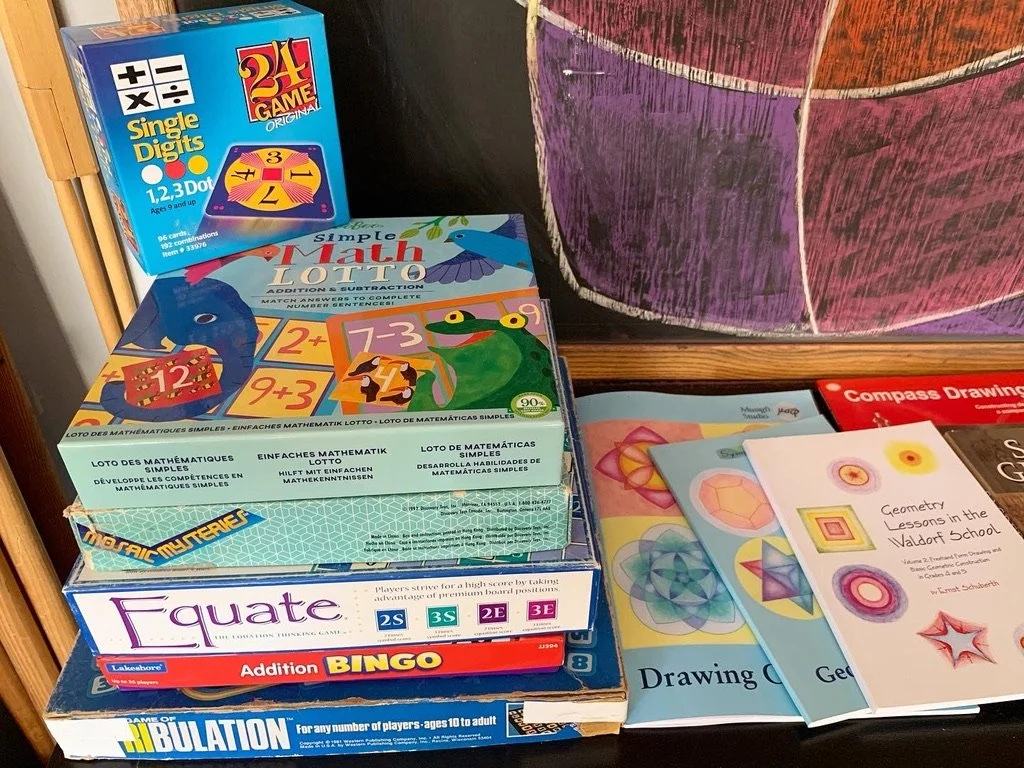Grade 1 | Age 7
First Grade marks the start of formal academic learning for the seven-year-old child. In a Waldorf setting, children who have lost their first teeth and are in their 7th year of life are ready for Grade 1. These physical milestones (losing baby teeth) reflect a mental preparedness that children are developmentally ready for formal academic instruction.
In our homeschool, we waited until the children were seven before starting our first academic lessons. In the home setting you will have more flexibility for when you choose to begin your formal academics. Either way, the loss of teeth, the age of awareness, and the seventh year of life are major developmental milestones for the child.
This developmental change is recognized in other educational pedagogies and by child psychologists who observe a distinct mental developmental shift in the child. In Waldorf education that change is marked, not just physically, but emotionally, mentally, and most importantly spiritually.
In Grade 1, students aged seven years, are beginning to awaken to the world around them. However, they are still in their imaginative phase of learning. There is not a clear distinction between imagination or fantasy and reality. That distinction will materialize after the Nine-Year-Change. Up until this point, if you try to explain to a child the difference between reality and fantasy, they may parrot back to you what you want to hear but cognitively they will not be able to comprehend that distinction for a couple more years.
The knowledge that children are in their imaginative phase of learning is used in the Waldorf elementary years through the use of fairy tales, folklore, animal fables, and other stories in which the lessons are readily understood while embedded in stories that are fantastical in nature. Adults may lose the wisdom of the story when their intellect overrides the fantastical nature of the story. However, the child accepts the rich lessons without hesitation. One may argue that children understand more deeply than adults the archetypal characters and the profound meaning behind the stories.
In Grade 1, students still love their teachers deeply and want to be in their presence often. The colors of the classroom reflect this warmth as the mood is still warm with colors of rose, soft reds, peach and pink. In a classroom you might find that students desks creep closer and closer to the front of the room where the teacher is. In the home setting, you might find that your child doesn’t just sit next to you when you tell them a story, but they must be in physical contact with you or on your lap (think toddlerhood or preschool).
It’s important to know that before children go through a major developmental change they tend to momentarily regress. This is a natural tendency that happens before the child leaps forward in development.
Students and children will love their teacher and their parent deeply in Grade 1. They see the teacher as a beloved kindly authority, who is warm, consistent and worthy of imitation. At this age, students believe the world is good and they see the good in people and the world, despite the harsh realities. This foundational feeling of goodness is cultivated through stories, music, art, and daily rhythms. This forms the moral and emotional ground for the learning to come. It provides a strong secure foundation for the student where they can experience wonder, trust, reverence and appreciation for beauty within them and around them.
While it is not always possible to change the colors of your homeschool space to match the development of the child, especially as many families are homeschooling more than one child, you may re-create the same mood through fabrics, accessories and materials. It might mean that the candle you burn daily is red, pink or coral colored. Or the silks that you draped from your windows are warm tones. Or you create a space within your homeschool space or classroom that is filled with colors and fabrics that represent the Grade 1 experience.
As the Grade 1 student is ready for formal education, they may not be ready for the rigors of academic learning. The first main lesson block the student will engage with form drawing. Form drawing forms the basis of the mechanics for drawing and writing. While the students’ fine motor skills are still developing, form drawing helps the students experience smooth, measured and intentional drawing using a large stick crayon or thick colored pencil. Form drawing comes before the first math main lesson block as well as the first language arts main lesson block. While form drawing has its own main lesson block in the younger years, it is a practice that continues throughout the grades and even into high school. Following the main lesson block in form drawing is the main lesson blocks on the introduction of the letters of the alphabet and later the quality of numbers.
It’s likely students have previously been exposed to numbers and letters as we live in a literate society, but the introduction to them in an academic sense focuses on the quality of letters and sounds rather than the mechanics of reading. And the math main lesson block focuses on the quality of numbers rather than the quantity. Curiously, students have an internal reverence for the quality of numbers before even being taught the quality in the main lesson block.
Often parents will desire to skip over the language arts main lesson block on the introduction of the letters of the alphabet and their sounds citing that their children already know how to read. But the introduction of the letters isn’t simply for students to be formally introduced to their sounds, it’s also to expose the child to a living lesson in the form of a story and a reverence for the quality of the letter. Often stories have deep lessons expressed through archetypal characters. These lessons are timeless and may be revisited over and again each time the student relates to the story in a new and profound way.
Once the sounds and letters are introduced, students move to writing before reading. The idea of learning how to read what one writes is a unique aspect of the Waldorf pedagogy. Now that the students know the sounds of the letters they may begin to write simple words, and from this writing process, they will form their own readers. As there are no textbooks or worksheets in a Waldorf setting, students create their own workbooks in the form of a main lesson book.
Learning, the quality of numbers is an ancient tradition that has been lost and replaced with the soulless quantity of numbers. In classical and historical educational models, the quality of numbers was foundational and universally understood.
Another unique aspect of the Waldorf pedagogy is the introduction of the four mathematical processes of addition, subtraction, multiplication, and division in Grade 1. Even these mathematical operations have a quality as well. And stories of knights and kings are told to teach these four math processes. Counting through clapping and skipping or stepping stones help students on their path to mastering the times tables. In all lessons, reverence and appreciation for beauty is infused not just in the lesson presentation, but the lesson work as well.
In Grade 1, students also have specialty classes in music, handwork, eurythmy, and foreign language. Outdoor play is still very important and breaks and recesses throughout the day allows children to play and move about. In music, the children will learn the Pentatonic songs on the flute, lyre or recorder. In handwork students will learn how to knit in the English style which promotes cross body action which helps with brain development. In foreign language, students will learn the language by listening as an introduction to the written language will not be for a few years.
A 2- or 3-day learning cycle begins in Grade 1. The introduction of the lesson is on the first day, revisiting or reviewing the lesson occurs the following day. It is in the review that the lesson really takes hold with a child and the learning deepens. On the second and third day of the lesson, students may begin the lesson work in their main lesson book. Often lessons include a written and illustrated portion. As students are still young and unable to write, the written portion may simply be the letter of the alphabet that they are studying. On the third day, the previous days lesson is reviewed and the lesson from the first day is put into an artistic representation of that lesson in the main lesson book. In this way, new learning, review learning and main lesson work is done daily.
Daily weekly and seasonal rhythm is still of paramount importance at this age. In Grade 1 with the introduction of formal academics, daily rhythm needs to balance in-breath work and out-breath work. In-breath and out-breath is the rhythm that will help a student have the stamina to make it through not just a day of school but a week, a month and a year of school. In-breath and out-breath is a concept of looking at lessons that provide rejuvenation or lessons that require work. Each temperament is unique. Each child is unique. And for some children, artistic work is an in-breath whereas recess is an out-breath, and in other cases for some students, artistic work is an out-breath where as circle time is an in-breath. Often math and grammar are considered in-breath activities which require a decompression afterwards like playtime or art. Thankfully, throughout the day there is a balance between these lessons so that students may find time to be inspired and rejuvenated by lessons as well as have an outpouring of work that requires concentration and cognition with the lessons.
By the time the student is in Grade 1, age 7, the etheric life forces that have been used to build the child’s physical body in the first seven years of life is now being transformed and becomes available for memory, imagination and symbolic or purposeful thought. Instruction is still pictorial and artistic and imbued with imagination. The child still learns through imagery, rhythm and imitation. They are not ready for logic, critical thinking or analysis. But the very first hints of abstract thought will be introduced in Grade 1 when we represent the number one as “1” for both quality and a quantity.
1st Grade Waldorf Curriculum
First grade in a Waldorf school begins at seven years of age, after the change of teeth has begun. Other notable differences about a the first grade curriculum is the story aspect of each lesson, even when you present the child with her first recorder, you present it along with a story. Stories are an important part of the Waldorf curriculum. It's what connects the child to the information. The information comes to life through the story told by the teacher. You may also notice an absence of textbooks, workbooks and even picture or chapter books. There are no textbooks because the teacher teaches the material (she does her research prior to teaching), there are no workbooks because the students make their own as the lessons progress by copying the chalk drawings on the chalkboard made by the teacher and adding a sentence or two copied from the board or dictated to the student. The students make their first readers with drawings and complete simple sentences which they then read themselves. The world of numbers is also introduced with stories to complement the introduction of each number.
1st Grade Homeschool Supplies | Grade 1
First grade supplies for a Waldorf curriculum are so beautiful and inspiring. Typical materials you'll find are watercolors, watercolor paper, block and stick crayons, a recorder, beeswax, yarn and wool.
These are the first-grade materials we use in our Waldorf-inspired homeschool, starting with music and open-ended play. First grade is when we begin the recorder, and while I also showed our glockenspiel, it isn’t required, it’s just a lovely, approachable instrument that can grow with the children. We want to shift our “toys” mindset toward natural, imaginative materials: Sarah’s Silks for forts and dress-up, hardy beanbags for lively morning mental math toss games, and simple peg dolls and finger puppets that double as playful props and gentle learning tools (we label ours with lowercase and uppercase letters). Natural materials matter. They mend, age beautifully, and invite imagination.
Waldorf Teacher Haul | Grade 1
I can’t think of more gorgeous school supplies than Waldorf supplies. But these aren’t for me. I teamed up with A Child’s Dream to arrange a special gift for a new Waldorf teacher who just started work at a Waldorf charter school that is only in its second year and still has a lot of growing pains ahead.
To help ease the transition for this teacher from conventional school to Waldorf school, I contact A Child’s Dream and asked if they would gift school supplies for this teacher through me so I can share it with you. Now this teacher has some treasured supplies to start the new year off with.
Abig thank you to Debbie for generously gifting everything I requested. All the materials you see are ones I have purchased throughout the years of homeschooling and have used extensively so I am hoping my selections will be just right for this new Waldorf teacher. And who is this new Waldorf teacher? It’s none other than my sister Aurelia who has been a teacher for 10 years and is now embarking on her Waldorf training and Waldorf teacher journey.
While these materials are typical for a Waldorf school, I think they are enriching additions to any school setting whether you do Waldorf or not. . You can follow my sisters as a Waldorf teacher in training as she navigates her way through this new teaching journey Aurelia. Oh! And be sure to send Debbie at A Child’s Dream some love for spreading joy ❤️🧡💛💚💙💜
When starting out on your Waldorf journey, you might want to begin with a Waldorf inspired curriculum if you are home educating. While I can’t say from experience how the following curricula fair, I can tell you that since 2004, we’ve been relying on Live Education! Waldorf curriculum for our needs. You can also explore Lavender Blue, Christopherus, and Waldorf Essentials or Oak Meadow if you want more traditional with just a hint of Waldorf. For more Waldorf vendors who specialize in curriculum or resources, there’s a section at the bottom of this post with more information. Once you have settled on a curriculum, you may want to turn your attention to some of the essentials like papers, pencils, crayons and chalks. Main lesson books are used so that students have a place to record their lessons. Typically the main lesson books are large for Grade 1 and they get progressively smaller as the students move from grade to grade. Main lesson books for the younger years are large notebooks with blank good quality paper. Often you may see them with onion sheets separating the two sheets of paper.
To go along with the main lesson books, you can add Stockmar Block and Stick crayons. These crayons are made from beeswax and come in a rainbow of colors. Typically students in Grade 1 begin with just the three primary colors: red, yellow and blue. Together with those colors, students create the secondary and tertiary colors and soon they are able to add those crayons to their crayon case. Stick crayons are used for form drawings and even beginning writing while block crayons come in handy for landscape drawings and filling in white spaces in their drawings. Block crayons are also used for making borders in their main lesson books. To help you on your crayon drawing journey, you may want to check out Coloring with Block Crayons. It’s a wonderful resource for beginners and veterans alike.
When looking to add teacher resources to your materials, I have to say that I’m loving the books by Angela Lord! Her books are colorful, informative and must-have resources especially if you are not relying on a Waldorf inspired curriculum. The ones I chose to include here (though she has several more), are Colour Dynamics and Form Drawing. If you could only choose one, I would highly recommend Form Drawing. Form Drawing is a main lesson you’re going to find in Waldorf school starting in Grade 1. I have included some aspects of form drawing in lessons all the way through Grade 8. Form drawing is the first main lesson block in Grade 1. It helps a student with basic hand eye coordination, centering his or her work within the page, fine and gross motor skills, pre-writing skills, artistry and patterns. Form drawing is therapeutic and meditative at times and therefore a good addition to any school setting and is especially helpful for students who struggle with attention and handwriting.
Once you’ve completed your first main lesson block, you may choose to move to a Language or Math main lesson block. If you embark on your Language main lesson block, you may want to add LMNOP Book and Wall Posters to your resource wish list. The book LMNOP is a collection of poems and illustrations that take you through the letters of the alphabet. The posters may be used as classroom decorations or art inspiration for your own chalk drawings. Incidentally, the book’s illustrated, Bruce Bischof, is also the author and illustrator of the Live Education curriculum! Bruce passed away in 2025 after a 5 year battle with cancer.
If art inspiration is not a top need for you, but you are looking for ways to hone your storytelling skills, I have found joy in using eeboo’s Storytelling Cards. These cards are brightly illustrated and can be used to help jumpstart a story individually or as a group. While I didn’t show the following book, I did find it very helpful early in my homeschool journey. Storytelling and the Art of Imagination by Nancy Melon (Amazon affiliate link for book) really helped me as I had not idea what things made up a story. I needed a book to break it down, down to the simplest steps like characters, plot and setting, etc. Of course this book takes it to a different level by adding Waldorf elements that will be helpful in the classroom or homeschool setting.
Your next block may be math and if so, the book King Maximo and the Number Knights may be a good addition especially if you are not using a Waldorf inspired curriculum. Because all four math operations are taught in Grade 1, you may wish to bring in some math finger puppets or math gnomes to help your students grasp these math concepts. You can make your own peg dolls and finger puppets with peg dolls, Lyra Opaque Watercolors, Holland wool felt, and Lamb’s pride yarn (for hair). We have made so many over the years and they are treasured toys in our homeschool that help facilitate open ended pretend play or with storytelling.
Then next block you might focus on in Grade 1 is watercoloring. While watercoloring doesn’t need to be a block per say, as it can be included in other blocks, it is a good idea to have some basic principles understood before embarking on watercoloring with your students as the Waldorf method is unique is a few aspects. To start with, images that are drawn or watercolor painted are soft, undefined and have blurred edges or rather the edges of the images are not sharply defined. Young students at that age don’t see the world as we do and their illustrations reflect that.
The teacher strives to provide drawings that have soft edges with less detail and when it comes to watercoloring, using a wet on wet technique is a great way to ensure that colors move across the page and blend into one another and thus keep the edges soft and ethereal. To achieve this, use high quality watercolor paper. I like Strathmore 140 lb. Watercolor paper. Though the this pad is 9’x12″, I recommend using larger sheets for Grade 1, though the smaller sheets are great for practice work or free painting. Stockmar watercolors are concentrated paints that need to be diluted with water. They have clear bright colors that mix well to produce secondary and tertiary colors. Grade 1 paint brushes are wide and flat and made from all-natural materials like squirrel hair and wood barrels.
Watercolor paint holders make spillage a thing of the past, but if all you need are the jars, you can buy them separately or repurpose yogurt jars. If you are brand new to Waldorf watercoloring, the book Colour Dynamics by Angela Lord will be a great help along the way. If you are inspired by that book and want to join a course I have on my site in which I do live lessons with my daughter inspired by images in this book, you can join the course by tapping on the button below.
While the main lesson (Morning Lesson) teacher doesn’t teach music, handwork, and other subjects, it helps to have a familiarity with music as songs are included in circle time, opening activities or other lessons. While there are many instruments to choose from, traditionally the classroom will have a piano and the teacher may hone her skills with a recorder or glockenspiel.
The pentatonic music book by David Darcy is a great resource for the musically challenged and possibly the veteran! Having never excelled in the signing or music, I can’t tell if that resource is too basic for someone who already has a music background. If you struggle with music (as I did), you may enjoy Come Follow Me which is a collection of songs you can sing in class. Growing your collection of poems and verses for all occasions happens naturally over the years. Give yourself some inspiration with Wynstone Books for each of the seasons, Summer, Autumn, Winter and Spring. These books are full of seasonally ideas and music to enrich your school day season by season.
Handwork in Grade 1
Handwork is a Waldorf subject area that’s close to my heart so I have given it a lot of attention through the years. While I’ve never progressed very far in the field, I have found that even basic knitting and sewing provide a wealth of developmental benefits. Knitting is taught in Grade 1 as a means to help develop the important brain function of the two hemispheres communicating with each other. the cross body movement of knitting is what awakens and strengthens that brain development. The cross body action is repeated in eurythmy and movement math as well as other areas. While it is far easier to introduce knitting over spatial dynamics and eurythmy, all areas are equally important to the developing child. When it comes to handwork, Grade 1 focuses on casting on, knitting, binding off and creating simply projects with practice squares and rectangles the student has knit.
One book that is tremendously helpful to the Grade 1 teacher in teaching how to knit the Waldorf way, which is rich in storytelling, is Jane and Jeremy learn to knit by Elizabeth Seward. The book is filled with stories and simply projects like how to knit a bunny. The book also shares how to make your own knitting needles. I had the honor of visiting Elizabeth in her Los Angeles home to knit with her and she taught my daughter how to make her own knitting needles. A year later, I made my own using dowels and oven bake clay to make mushroom topped knitting needles.
While they are cute, they are longer than what a Grade 1 student will feel comfortable using. Keep needles to about 9-10 inches for ease in use. To start off, students use size 10 knitting needles and bulky or similar type of yarn. Some teachers prefer plied yarn while other stick with the bulky. Not being a master knitter or handwork teacher, I’ve stuck with using Lamb’s Pride bulky weight yarn for all my beginner knitters and actually stuck with that yarn in worsted weight for other projects. I like the color range of yarns by Lamb’s Pride and most, if not all, of our handwork projects through the years use Lamb’s Pride yarn or Holland Felt.
Handwork is not limited to the projects that a student will do, the teacher may do many projects ahead of time to add dolls, toys or educational supplements to the classroom. Often I made peg dolls and finger puppets to add toys for the students’ imaginative play. Sometimes my older students would stitch projects that would be used to decorate the classroom or be soft toys the younger children would play with. While needle felting isn’t a handcraft that is found in the Waldorf curriculum, many have included it or in the least have included the animals and felted projects that have been needle felted. Over the years, I have settled on a few supplies that I return to over and over again for their versatile use and durability. I love the peg dolls for their possibility. While they come is all shapes and sizes, I like the standard peg doll as it can be used for a male or female or even child or adult. While the little ones and female shaped ones are nice, I don’t tend to use those as much. You can paint them with Lyra Opaque Watercolors or wool felt.
I love Holland Felt is all the gorgeous colors they carry. We have used felt for stitching projects in later grades and for sewing projects in grade 5 and beyond. In Grade 1, the teacher may use it for peg dolls, to make classroom decorations or for stitching projects she brings to the classroom. I like the collections for Winter, Spring, Summer and Autumn (with Autumn being my favorite), because they are a nice assortment of colors and are just the right size for many of the projects we end up doing. Don’t forget your embroidery floss and embroidery needles!
If you wish to do some needle felting, you’ll need needle felting needles (which are very sharp!), a foam pad and wool roving. I chose three colors in the orange family to make pumpkins as they make a color addition to the classroom for fall decor.
If you are looking for opportunities to add decorations to your classroom then kite paper is a must! You can use it to make beautiful suncatchers which are stars that decorate windows. As the light comes in, the suncatchers catch the light and are illuminated beautifully depending on the folds and color layering. Another option for decorations which double as playthings are silks and cloths. My favorite are Sarah’s Silks and Cotton Play Cloths. I’ve used silks in our homeschool for ages, but recently Sarah’s Silks came out with cotton cloth which is a great alternative for Plant based families or Muslim families who have pubescent boys who still like to play dressup.
Curriculum for Grade 1
First grade in a Waldorf school begins at seven years of age, after the change of teeth has begun. Other notable differences about a the first grade curriculum is the story aspect of each lesson, even when you present the child with her first recorder, you present it along with a story. Stories are an important part of the Waldorf curriculum. It’s what connects the child to the information. The information comes to life through the story told by the teacher. You may also notice an absence of textbooks, workbooks and even picture or chapter books. There are no textbooks because the teacher teaches the material (she does her research prior to teaching), there are no workbooks because the students make their own as the lessons progress by copying the chalk drawings on the chalkboard made by the teacher and adding a sentence or two copied from the board or dictated to the student. The students make their first readers with drawings and complete simple sentences which they then read themselves. The world of numbers is also introduced with stories to complement the introduction of each number.
Does your child already know the ABC’s and the numbers before entering grade one? Probably. Most kids pick them up along the way, but don’t overlook this beautiful presentation of the numbers and letters, there’s more to the lesson than just the technical and mechanical acquisition of the numbers and letters. The value is a deeper connection to learning and sets the foundation for how information and skills will be taught and acquired throughout the grades. There is reverence and honor in every aspect of the Waldorf curriculum, down to how the crayons are used and stored to how one transitions from one activity to the next. The curriculum I am presenting today is from Live Education. Here’s a look at this Grade 1 Curriculum from Live Education.
We homeschool using many different yet congruent philosophies including Waldorf, TJed, and Charlotte Mason, but use the curriculum from Live-Education for inspiration. Some books I recommend: Children and Their Temperaments by Marieke Anschutz, Storytelling & The Art of Imagination by Nancy Mellon, Healing Stories for Challenging Behavior by Susan Perrow, You Are Your Child’s First Teacher by Rahima Baldwin, The Education of the Child by Rudolf Steiner, and The Kingdom of Childhood by Rudolf Steiner.

Grade 1
Grade 1
-
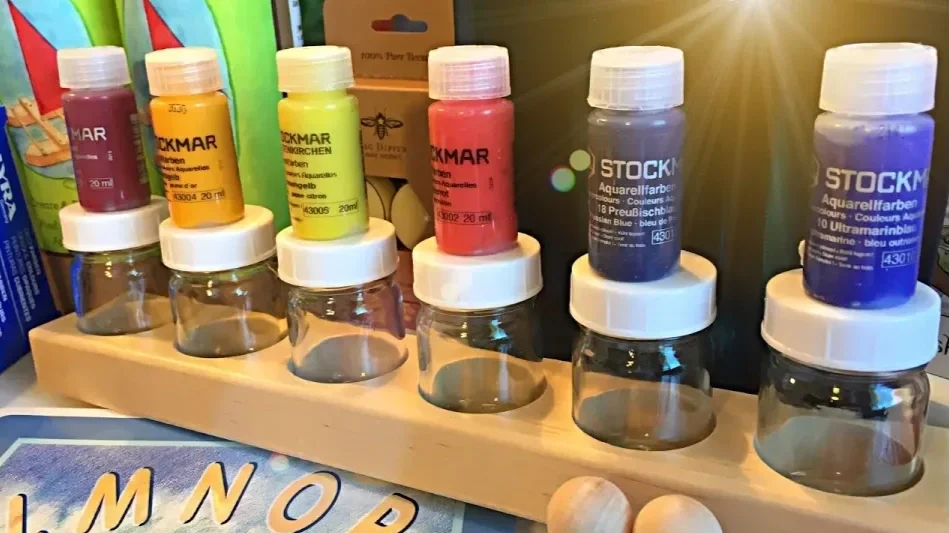
1st Grade Waldorf Curriculum
First grade in a Waldorf school begins at seven years of age, after the change of teeth has begun. Other notable differences about a the first grade curriculum is the story aspect of each lesson, even when you present the child with her first recorder, you present it along with a story. Stories are an important part of the Waldorf curriculum.
-

New To Waldorf | Teacher Grade 1
I can’t think of more gorgeous school supplies than Waldorf supplies. But these aren’t for me. I teamed up with @achildsdreamcrafts to arrange a special gift for a new Waldorf teacher who just started work at a Waldorf charter school that is only in its second year and still has a lot of growing pains ahead.
-

1st Grade Homeschool Supplies | Grade 1
First grade supplies for a Waldorf curriculum are so beautiful and inspiring. Typical materials you'll find are watercolors, watercolor paper, block and stick crayons, a recorder, beeswax, yarn and wool.
-

Controversial Grade 1 Practices | Waldorf
While we tend to follow a Waldorf approach, there are some places where I disagree with it and have made some very intentional modifications for our homeschool. In Waldorf education, formal academics begin in the seventh year of life, so the Grade 1 child is usually turning seven sometime during that school year.
-

Waldorf Math | Living Books | Grade 1-3
Do you want to make math meaningful, educational and enjoyable? It may seem like an impossible task, but it can be achieved! I've collected a number of living books and games to enhance our math main lesson block. These materials are suitable for students grades 1-3 but can be enjoyed by older students as well.
-
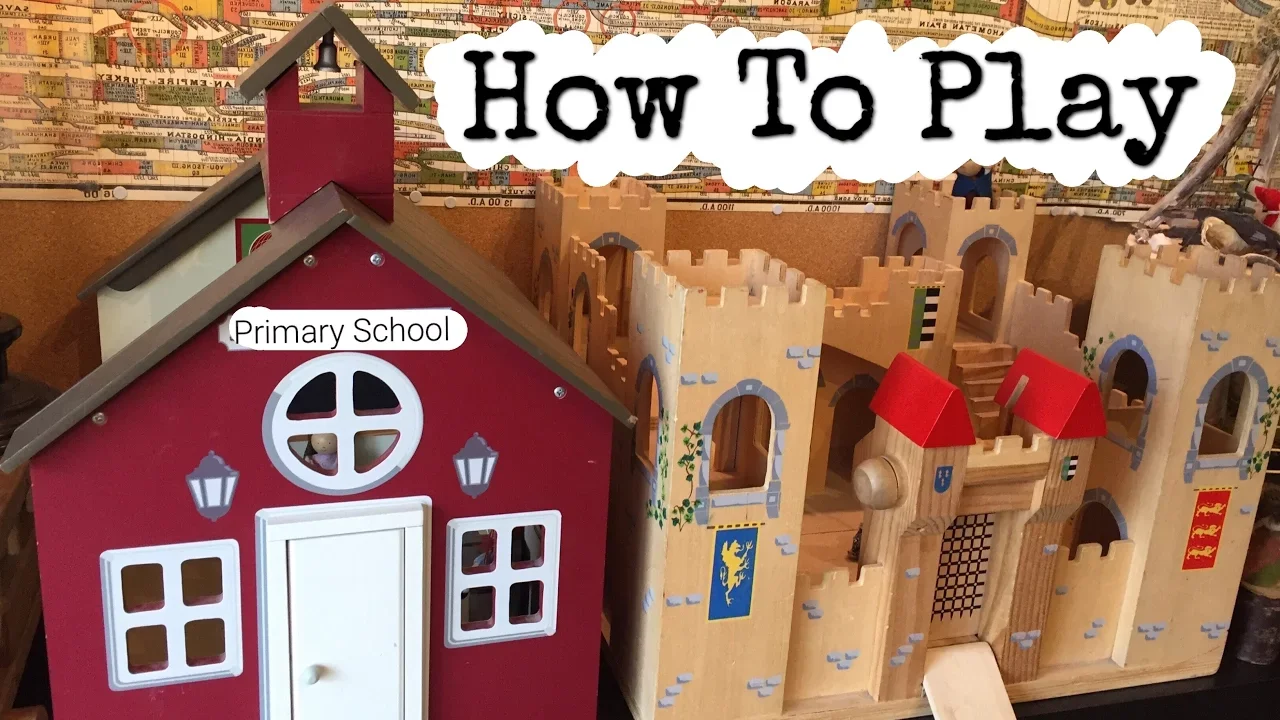
Transition Activities for Children from Play to Homeschool
Let them play. They won't want to when they are older, so you might as well foster it while they are young. But what kind of play am I talking about? I have specific ideas on that, and I'll share them with you because there is a lot of 'play' I don't support. First, this play is completely media-free. No ipad, video games, movies or even audio-books. In the absence of media, what will you surround your children with to play?
-
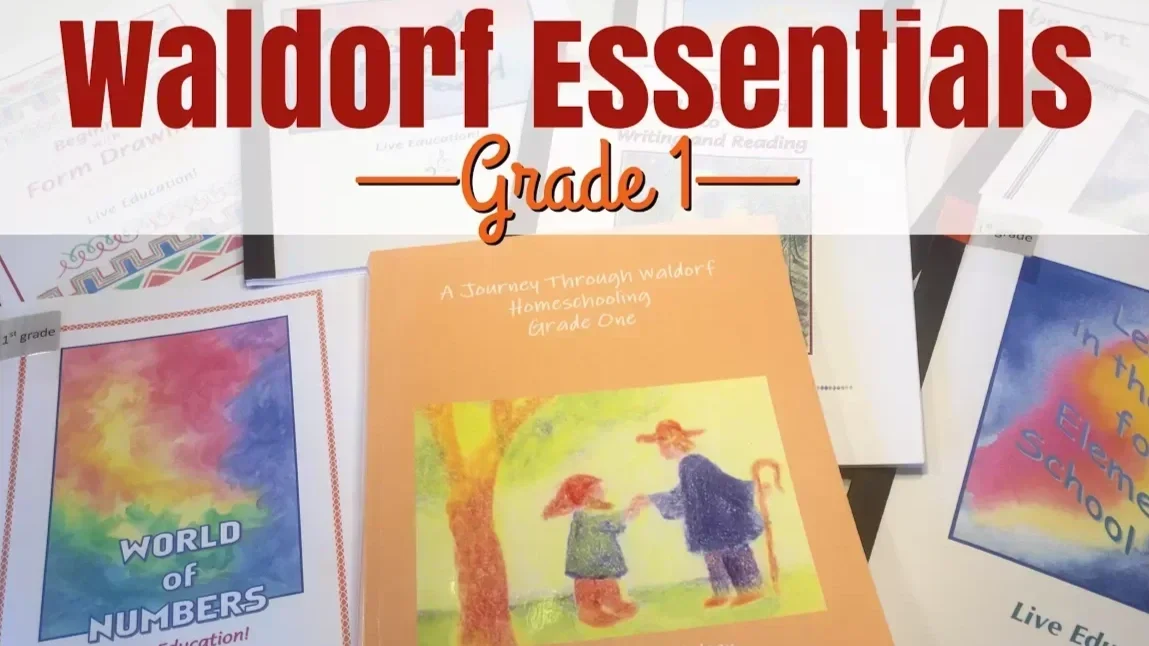
Grade 1 Waldorf Essentials Curriculum Review + Comparison with Live Education
It's probably the biggest homeschooling decision you're going to make: Choosing a curriculum. When you've finally narrowed down you want to do a Waldorf approach, next you have to sort through the Waldorf curricula that are available. Today I'm walking you through the Waldorf Essentials curriculum for first grade with a comparison to the Live-Education curriculum also for grade one.
Watercolor Lessons
Nature Study | Resources
-

Charlotte Mason Living Books
Everytime I think I'm done buying books, I find more I think I like. In some cases, I see other homeschoolers using these gems in their homeschool and decide we want to add them to our library. Other times, Amazon recommends books based on our purchases and what other customers bought.
-
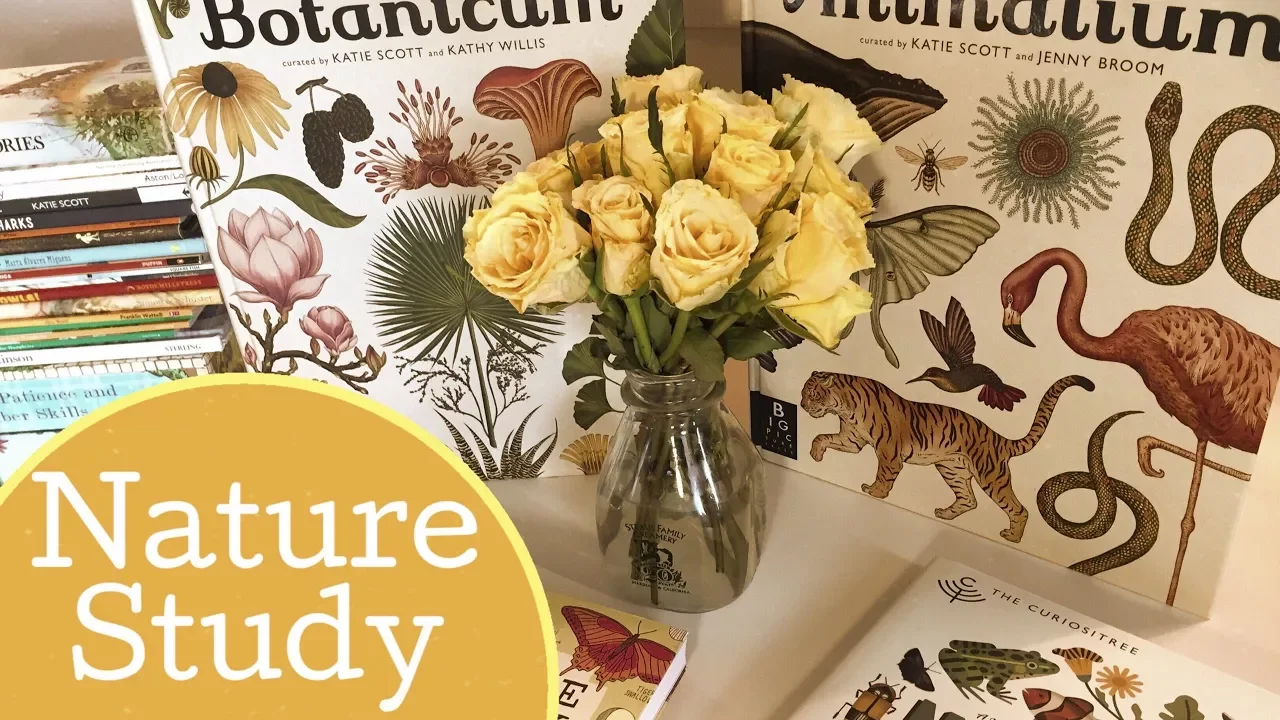
Nature Study | Botany & Zoology
Each Spring when we do our nature unit studies, we collect an assortment of nature science books in botany and zoology, coordinate projects and hands-on activities, and round it out with some picture books and games. Each year it’s similar but different as we add new books and projects.
-

Life Cycle of a Frog | Chalk Drawing
I created a new chalk drawing for our main lesson board, and this time I focused on the lower right side where I illustrated the life cycle of a frog. For this project, I used my Sargent Art chalk pastels, which I love because they produce vibrant, rich colors. Over the years, we’ve worn our pastels down so much that some are just tiny nubs, so I recently added a few new ones to my collection.
Nature Study Lessons
Nature Study | Projects & Activities
Form Drawing Lessons
Handwork Projects| Grade 1

Grade 1
1st Grade Waldorf Curriculum
First grade in a Waldorf school begins at seven years of age, after the change of teeth has begun. Other notable differences about a the first grade curriculum is the story aspect of each lesson, even when you present the child with her first recorder, you present it along with a story. Stories are an important part of the Waldorf curriculum. It's what connects the child to the information. The information comes to life through the story told by the teacher. You may also notice an absence of textbooks, workbooks and even picture or chapter books. There are no textbooks because the teacher teaches the material (she does her research prior to teaching), there are no workbooks because the students make their own as the lessons progress by copying the chalk drawings on the chalkboard made by the teacher and adding a sentence or two copied from the board or dictated to the student. The students make their first readers with drawings and complete simple sentences which they then read themselves. The world of numbers is also introduced with stories to complement the introduction of each number.
Does your child already know the ABC's and the numbers before entering grade one? Probably. Most kids pick them up along the way, but don't overlook this beautiful presentation of the numbers and letters, there's more to the lesson than just the technical and mechanical acquisition of the numbers and letters. The value is a deeper connection to learning and sets the foundation for how information and skills will be taught and acquired throughout the grades. There is reverence and honor in every aspect of the Waldorf curriculum, down to how the crayons are used and stored to how one transitions from one activity to the next.
The curriculum I am presenting to day is from Live-Education.
We homeschool using many different yet congruent philosophies including Waldorf, TJed, and Charlotte Mason, but use the curriculum from Live-Education for inspiration.
Some books I recommend:
Children and Their Temperaments by Marieke Anschutz
Storytelling & The Art of Imagination by Nancy Mellon
Healing Stories for Challenging Behavior by Susan Perrow
You Are Your Child's First Teacher by Rahima Baldwin
The Education of the Child by Rudolf Steiner
The Kingdom of Childhood by Rudolf Steiner
Waldorf Teacher Haul | Grade 1
I can’t think of more gorgeous school supplies than Waldorf supplies. But these aren’t for me. I teamed up with A Child’s Dream to arrange a special gift for a new Waldorf teacher who just started work at a Waldorf charter school that is only in its second year and still has a lot of growing pains ahead.
To help ease the transition for this teacher from conventional school to Waldorf school, I contact A Child’s Dream and asked if they would gift school supplies for this teacher through me so I can share it with you. Now this teacher has some treasured supplies to start the new year off with.
Abig thank you to Debbie for generously gifting everything I requested. All the materials you see are ones I have purchased throughout the years of homeschooling and have used extensively so I am hoping my selections will be just right for this new Waldorf teacher. And who is this new Waldorf teacher? It’s none other than my sister Aurelia who has been a teacher for 10 years and is now embarking on her Waldorf training and Waldorf teacher journey.
While these materials are typical for a Waldorf school, I think they are enriching additions to any school setting whether you do Waldorf or not. . You can follow my sisters as a Waldorf teacher in training as she navigates her way through this new teaching journey Aurelia. Oh! And be sure to send Debbie at A Child’s Dream some love for spreading joy ❤️🧡💛💚💙💜
When starting out on your Waldorf journey, you might want to begin with a Waldorf inspired curriculum if you are home educating. While I can’t say from experience how the following curricula fair, I can tell you that since 2004, we’ve been relying on Live Education! Waldorf curriculum for our needs. You can also explore Lavender Blue, Christopherus, and Waldorf Essentials or Oak Meadow if you want more traditional with just a hint of Waldorf. For more Waldorf vendors who specialize in curriculum or resources, there’s a section at the bottom of this post with more information. Once you have settled on a curriculum, you may want to turn your attention to some of the essentials like papers, pencils, crayons and chalks. Main lesson books are used so that students have a place to record their lessons. Typically the main lesson books are large for Grade 1 and they get progressively smaller as the students move from grade to grade. Main lesson books for the younger years are large notebooks with blank good quality paper. Often you may see them with onion sheets separating the two sheets of paper.
To go along with the main lesson books, you can add Stockmar Block and Stick crayons. These crayons are made from beeswax and come in a rainbow of colors. Typically students in Grade 1 begin with just the three primary colors: red, yellow and blue. Together with those colors, students create the secondary and tertiary colors and soon they are able to add those crayons to their crayon case. Stick crayons are used for form drawings and even beginning writing while block crayons come in handy for landscape drawings and filling in white spaces in their drawings. Block crayons are also used for making borders in their main lesson books. To help you on your crayon drawing journey, you may want to check out Coloring with Block Crayons. It’s a wonderful resource for beginners and veterans alike.
When looking to add teacher resources to your materials, I have to say that I’m loving the books by Angela Lord! Her books are colorful, informative and must-have resources especially if you are not relying on a Waldorf inspired curriculum. The ones I chose to include here (though she has several more), are Colour Dynamics and Form Drawing. If you could only choose one, I would highly recommend Form Drawing. Form Drawing is a main lesson you’re going to find in Waldorf school starting in Grade 1. I have included some aspects of form drawing in lessons all the way through Grade 8. Form drawing is the first main lesson block in Grade 1. It helps a student with basic hand eye coordination, centering his or her work within the page, fine and gross motor skills, pre-writing skills, artistry and patterns. Form drawing is therapeutic and meditative at times and therefore a good addition to any school setting and is especially helpful for students who struggle with attention and handwriting.
Once you’ve completed your first main lesson block, you may choose to move to a Language or Math main lesson block. If you embark on your Language main lesson block, you may want to add LMNOP Book and Wall Posters to your resource wish list. The book LMNOP is a collection of poems and illustrations that take you through the letters of the alphabet. The posters may be used as classroom decorations or art inspiration for your own chalk drawings. Incidentally, the book’s illustrated, Bruce Bischof, is also the author and illustrator of the Live Education curriculum! Bruce passed away in 2025 after a 5 year battle with cancer.
If art inspiration is not a top need for you, but you are looking for ways to hone your storytelling skills, I have found joy in using eeboo’s Storytelling Cards. These cards are brightly illustrated and can be used to help jumpstart a story individually or as a group. While I didn’t show the following book, I did find it very helpful early in my homeschool journey. Storytelling and the Art of Imagination by Nancy Melon (Amazon affiliate link for book) really helped me as I had not idea what things made up a story. I needed a book to break it down, down to the simplest steps like characters, plot and setting, etc. Of course this book takes it to a different level by adding Waldorf elements that will be helpful in the classroom or homeschool setting.
Your next block may be math and if so, the book King Maximo and the Number Knights may be a good addition especially if you are not using a Waldorf inspired curriculum. Because all four math operations are taught in Grade 1, you may wish to bring in some math finger puppets or math gnomes to help your students grasp these math concepts. You can make your own peg dolls and finger puppets with peg dolls, Lyra Opaque Watercolors, Holland wool felt, and Lamb’s pride yarn (for hair). We have made so many over the years and they are treasured toys in our homeschool that help facilitate open ended pretend play or with storytelling.
Then next block you might focus on in Grade 1 is watercoloring. While watercoloring doesn’t need to be a block per say, as it can be included in other blocks, it is a good idea to have some basic principles understood before embarking on watercoloring with your students as the Waldorf method is unique is a few aspects. To start with, images that are drawn or watercolor painted are soft, undefined and have blurred edges or rather the edges of the images are not sharply defined. Young students at that age don’t see the world as we do and their illustrations reflect that.
The teacher strives to provide drawings that have soft edges with less detail and when it comes to watercoloring, using a wet on wet technique is a great way to ensure that colors move across the page and blend into one another and thus keep the edges soft and ethereal. To achieve this, use high quality watercolor paper. I like Strathmore 140 lb. Watercolor paper. Though the this pad is 9’x12″, I recommend using larger sheets for Grade 1, though the smaller sheets are great for practice work or free painting. Stockmar watercolors are concentrated paints that need to be diluted with water. They have clear bright colors that mix well to produce secondary and tertiary colors. Grade 1 paint brushes are wide and flat and made from all-natural materials like squirrel hair and wood barrels.
Watercolor paint holders make spillage a thing of the past, but if all you need are the jars, you can buy them separately or repurpose yogurt jars. If you are brand new to Waldorf watercoloring, the book Colour Dynamics by Angela Lord will be a great help along the way. If you are inspired by that book and want to join a course I have on my site in which I do live lessons with my daughter inspired by images in this book, you can join the course by tapping on the button below.
While the main lesson (Morning Lesson) teacher doesn’t teach music, handwork, and other subjects, it helps to have a familiarity with music as songs are included in circle time, opening activities or other lessons. While there are many instruments to choose from, traditionally the classroom will have a piano and the teacher may hone her skills with a recorder or glockenspiel.
The pentatonic music book by David Darcy is a great resource for the musically challenged and possibly the veteran! Having never excelled in the signing or music, I can’t tell if that resource is too basic for someone who already has a music background. If you struggle with music (as I did), you may enjoy Come Follow Me which is a collection of songs you can sing in class. Growing your collection of poems and verses for all occasions happens naturally over the years. Give yourself some inspiration with Wynstone Books for each of the seasons, Summer, Autumn, Winter and Spring. These books are full of seasonally ideas and music to enrich your school day season by season.
Handwork in Grade 1
Handwork is a Waldorf subject area that’s close to my heart so I have given it a lot of attention through the years. While I’ve never progressed very far in the field, I have found that even basic knitting and sewing provide a wealth of developmental benefits. Knitting is taught in Grade 1 as a means to help develop the important brain function of the two hemispheres communicating with each other. the cross body movement of knitting is what awakens and strengthens that brain development. The cross body action is repeated in eurythmy and movement math as well as other areas. While it is far easier to introduce knitting over spatial dynamics and eurythmy, all areas are equally important to the developing child. When it comes to handwork, Grade 1 focuses on casting on, knitting, binding off and creating simply projects with practice squares and rectangles the student has knit.
One book that is tremendously helpful to the Grade 1 teacher in teaching how to knit the Waldorf way, which is rich in storytelling, is Jane and Jeremy learn to knit by Elizabeth Seward. The book is filled with stories and simply projects like how to knit a bunny. The book also shares how to make your own knitting needles. I had the honor of visiting Elizabeth in her Los Angeles home to knit with her and she taught my daughter how to make her own knitting needles. A year later, I made my own using dowels and oven bake clay to make mushroom topped knitting needles.
While they are cute, they are longer than what a Grade 1 student will feel comfortable using. Keep needles to about 9-10 inches for ease in use. To start off, students use size 10 knitting needles and bulky or similar type of yarn. Some teachers prefer plied yarn while other stick with the bulky. Not being a master knitter or handwork teacher, I’ve stuck with using Lamb’s Pride bulky weight yarn for all my beginner knitters and actually stuck with that yarn in worsted weight for other projects. I like the color range of yarns by Lamb’s Pride and most, if not all, of our handwork projects through the years use Lamb’s Pride yarn or Holland Felt.
Handwork is not limited to the projects that a student will do, the teacher may do many projects ahead of time to add dolls, toys or educational supplements to the classroom. Often I made peg dolls and finger puppets to add toys for the students’ imaginative play. Sometimes my older students would stitch projects that would be used to decorate the classroom or be soft toys the younger children would play with. While needle felting isn’t a handcraft that is found in the Waldorf curriculum, many have included it or in the least have included the animals and felted projects that have been needle felted. Over the years, I have settled on a few supplies that I return to over and over again for their versatile use and durability. I love the peg dolls for their possibility. While they come is all shapes and sizes, I like the standard peg doll as it can be used for a male or female or even child or adult. While the little ones and female shaped ones are nice, I don’t tend to use those as much. You can paint them with Lyra Opaque Watercolors or wool felt.
I love Holland Felt is all the gorgeous colors they carry. We have used felt for stitching projects in later grades and for sewing projects in grade 5 and beyond. In Grade 1, the teacher may use it for peg dolls, to make classroom decorations or for stitching projects she brings to the classroom. I like the collections for Winter, Spring, Summer and Autumn (with Autumn being my favorite), because they are a nice assortment of colors and are just the right size for many of the projects we end up doing. Don’t forget your embroidery floss and embroidery needles!
If you wish to do some needle felting, you’ll need needle felting needles (which are very sharp!), a foam pad and wool roving. I chose three colors in the orange family to make pumpkins as they make a color addition to the classroom for fall decor.
If you are looking for opportunities to add decorations to your classroom then kite paper is a must! You can use it to make beautiful suncatchers which are stars that decorate windows. As the light comes in, the suncatchers catch the light and are illuminated beautifully depending on the folds and color layering. Another option for decorations which double as playthings are silks and cloths. My favorite are Sarah’s Silks and Cotton Play Cloths. I’ve used silks in our homeschool for ages, but recently Sarah’s Silks came out with cotton cloth which is a great alternative for Plant based families or Muslim families who have pubescent boys who still like to play dressup.
Curriculum for Grade 1
First grade in a Waldorf school begins at seven years of age, after the change of teeth has begun. Other notable differences about a the first grade curriculum is the story aspect of each lesson, even when you present the child with her first recorder, you present it along with a story. Stories are an important part of the Waldorf curriculum. It’s what connects the child to the information. The information comes to life through the story told by the teacher. You may also notice an absence of textbooks, workbooks and even picture or chapter books. There are no textbooks because the teacher teaches the material (she does her research prior to teaching), there are no workbooks because the students make their own as the lessons progress by copying the chalk drawings on the chalkboard made by the teacher and adding a sentence or two copied from the board or dictated to the student. The students make their first readers with drawings and complete simple sentences which they then read themselves. The world of numbers is also introduced with stories to complement the introduction of each number.
Does your child already know the ABC’s and the numbers before entering grade one? Probably. Most kids pick them up along the way, but don’t overlook this beautiful presentation of the numbers and letters, there’s more to the lesson than just the technical and mechanical acquisition of the numbers and letters. The value is a deeper connection to learning and sets the foundation for how information and skills will be taught and acquired throughout the grades. There is reverence and honor in every aspect of the Waldorf curriculum, down to how the crayons are used and stored to how one transitions from one activity to the next. The curriculum I am presenting today is from Live Education. Here’s a look at this Grade 1 Curriculum from Live Education.
We homeschool using many different yet congruent philosophies including Waldorf, TJed, and Charlotte Mason, but use the curriculum from Live-Education for inspiration. Some books I recommend: Children and Their Temperaments by Marieke Anschutz, Storytelling & The Art of Imagination by Nancy Mellon, Healing Stories for Challenging Behavior by Susan Perrow, You Are Your Child’s First Teacher by Rahima Baldwin, The Education of the Child by Rudolf Steiner, and The Kingdom of Childhood by Rudolf Steiner.
Grade 1 Supplies, Resources and Materials
First grade supplies for a Waldorf curriculum are so beautiful and inspiring. Check out this VIDEO to see the materials for grade 1. Typical materials you’ll find are watercolors, watercolor paper, block and stick crayons, a recorder, beeswax, yarn and wool. 0:52 Pentatonic Flute 1:18 Glockenspiel 2:02 Silk 4:52 ABC Peg Doll Tutorial https://www.youtube.com/watch?v=FjKtp… 5:45 Weather Gnomes https://www.youtube.com/watch?v=cT-w-… 6:24 Wool Felt https://achildsdream.com/holland-wool… 6:29 Peg Dolls https://achildsdream.com/wood-peg-dol… 6:29 Finger Puppet bases https://achildsdream.com/wood-finger-… 7:04 Kite paper https://achildsdream.com/window-stars… 7:12 Suncatcher tutorial https://www.youtube.com/watch?v=g5jJJ… 7:40 Origami Paper https://achildsdream.com/folia-origam… 7:52 Tissue Paper https://achildsdream.com/art-tissue-p… 8:05 Tissue Paper project https://www.youtube.com/watch?v=YB0TI… 8:41 Making Peg Dolls Book https://achildsdream.com/making-peg-d… 9:42 Crafts Through the Year https://achildsdream.com/crafts-throu… 10:28 Autumn Book https://achildsdream.com/wynstones-bo… 10:40 Winter Book https://achildsdream.com/wynstones-bo… 10:59 The Living Alphabet https://www.amazon.com/Living-Alphabe… 11:23 Stockmar Beeswax https://achildsdream.com/stockmar-mod… 12:03 Create-A-Story Card by eeboo https://achildsdream.com/create-a-sto… 12:46 Storytelling Book https://www.amazon.com/Storytelling-A… 14:46 Waldorf Poetry Book https://www.amazon.com/Waldorf-Book-A… 14:48 Waldorf Animal Poetry https://www.amazon.com/Waldorf-Book-P… 15:01 Wool https://achildsdream.com/ashford-corr… 15:20 Wool https://achildsdream.com/merino-wool-… 15:59 Felt needles https://achildsdream.com/felting-need… 17:24 Wood Clip https://achildsdream.com/wood-fort-bu… 18:10 Nutcracker Link coming soon 20:47 Finger knitters https://achildsdream.com/knitting-tower/ 21:17 Dazzle-it Link? Not sure! 22:17 Lamb’s Pride Yarn Bulky https://achildsdream.com/handpaint-wo… 22:56 Lamb’s Pride Worsted Weight https://achildsdream.com/lambs-pride-… 23:30 Yarn ball Tutorial coming soon 24:30 Knitted Ball Tutorial coming soon 25:00 Weaving tutorial https://www.youtube.com/watch?v=Hs89I… 25:45 Counting Sticks tutorial https://youtu.be/TpT4ZI3Odjc 27:12 Candle Rolling Kit https://achildsdream.com/beeswax-cand… 27:25 Candle Rolling Tutorial https://youtu.be/rsBmk0uWOz0 27:30 Candle dipping tutorial https://youtu.be/Ca9q4XmxcYU 27:55 Grimm’s Fairy Tales link coming soon 30:30 Main Lesson book https://www.waldorfsupplies.com/produ… 30:52 Stockmar Stick crayons https://achildsdream.com/stockmar-bee… 31:35 Stockmar Block Crayons https://achildsdream.com/stockmar-bee… 32:10 Crayon holder tutorial https://youtu.be/WstLaqrF_qE 33:43 Strathmore Watercolor paper https://www.waldorfsupplies.com/?s=wa… 34:44 Stockmar watercolors https://achildsdream.com/stockmar-wat… 35:18 Watercolor Pumpkins tutorial https://youtu.be/W500Le9nfKw 36:01 Watercolor Brushes https://www.waldorfsupplies.com/?s=wa… https://achildsdream.com/wide-paint-b… 36:36 Watercoloring techniques https://youtu.be/vwateIIIcQQ 37:11 Chalk Pastels http://www.dickblick.com/products/sar… 37:33 Chalk Drawing Tutorials Playlist https://www.youtube.com/watch?v=2KeUa… 37:43 Waldorf blackboard chalks https://www.waldorfsupplies.com/?s=ch… First Grade Waldorf Curriculum https://www.youtube.com/watch?v=kbnLc…
If you want more, here is a complete playlist of Grade 1 videos which includes curriculum, supplies, and tutorials.
Waldorf Vendors and Resources
There are many Waldorf inspired vendors who service Waldorf schools and homeschools alike. Though I’m not sharing a comprehensive list, you are welcome to add your shop or recommend one in the comment section below!
Here are some vendors who have been recommended to me, Little Acorn Learning, Earth Schooling, Blossom and Root, Season of Seven, Waldorf Inspired Homeschooling, Daily Wonder, Modern Waldorf Online, and Beauty of Play.
1st Grade Homeschool Supplies | Grade 1
First grade supplies for a Waldorf curriculum are so beautiful and inspiring. Typical materials you'll find are watercolors, watercolor paper, block and stick crayons, a recorder, beeswax, yarn and wool.
These are the first-grade materials we use in our Waldorf-inspired homeschool, starting with music and open-ended play. First grade is when we begin the recorder, and while I also showed our glockenspiel, it isn’t required, it’s just a lovely, approachable instrument that can grow with the children. We want to shift our “toys” mindset toward natural, imaginative materials: Sarah’s Silks for forts and dress-up, hardy beanbags for lively morning mental math toss games, and simple peg dolls and finger puppets that double as playful props and gentle learning tools (we label ours with lowercase and uppercase letters). Natural materials matter. They mend, age beautifully, and invite imagination.
Translucent kite paper is great for suncatchers, origami squares can be used for general paper play, and pigment-bleeding tissue has been used with water for uniques colorful work. The following books are highly recommended: Making Peg Dolls (a true skill-builder), Crafts Through the Year (seasonal ideas), and the seasonal song/verse collections (Autumn, Winter, etc.) that support rhythm. The Living Alphabet can complement the letters block. We also keep Stockmar modeling beeswax on hand—wonderful for busy fingers on warmer days—and a deck of Creative Story Cards to spark oral storytelling, which is central to Waldorf.
Because storytelling can feel daunting, I recommend Storytelling and the Art of Imagination and offered my “get started now” tip: retell a favorite tale or film in your own words, your children will receive what you offer from the heart. We made felted play foods (made with sharp needles, best for older kids or close supervision), sturdy wooden fabric clips (and thrifty binder-clip stand-ins), and our beloved hand-crank nutcracker that becomes both a fall snack and a craft supply (shell boats and cradle crafts). We keep a rotating nature basket, moving through plant, mineral, and animal “kingdoms,” and I shared tactile finger-knitting and knotting activities, then moved into beginning knitting with Lamb’s Pride wool (bulky yarn and larger needles help beginners finish happily). Simple weaving looms and blunt needles make quick, satisfying pouches.
Main Lesson blocks last about three to four weeks per block (topic area), there are no textbooks or worksheets, the teacher presents content orally and the child responds through drawing, movement, and later writing. The core supplies reflect that: large main-lesson books; Stockmar block and stick crayons (with a wooden crayon holder to teach care and order); wet-on-wet watercolor on heavy 140-lb paper using only primary colors to let forms and mood emerge; and wide brushes for broad, flowing strokes. Candle-making as a cozy daily ritual, you many choose gentler Grimm’s tales if you bring them in. There are chalky chalks and pastel chalks. Each have their benefits. I prefer the pastel chalks for richer colors, but they are harder to erase, versus traditional school chalk. Here is the list of materials I share with links to the products or tutorial videos.
0:52 Recorder
1:18 Glockenspiel
2:02 Silk
5:45 Weather Gnomes
6:24 Wool Felt
6:29 Peg Dolls
6:29 Finger Puppet bases
7:04 Kite paper
7:12 Suncatcher tutorial
7:40 Origami Paper
7:52 Tissue Paper
8:05 Tissue Paper project
10:28 Autumn Book
10:40 Winter Book
10:59 The Living Alphabet
11:23 Stockmar Beeswax
12:03 Create-A-Story Card by eeboo
12:46 Storytelling Book
14:46 Waldorf Poetry Book
14:48 Waldorf Animal Poetry
15:01 Wool
15:20 Wool
15:59 Felt needles
17:24 Wood Clip
18:10 Nutcracker
20:47 Finger knitters
21:17 Dazzle-it
22:17 Lamb's Pride Yarn Bulky
22:56 Lamb's Pride Worsted Weight
23:30 Yarn ball
24:30 Knitted Ball
25:00 Weaving tutorial
25:45 Counting Sticks tutorial
27:12 Candle Rolling Kit
27:25 Candle Rolling Tutorial
27:30 Candle dipping tutorial
27:55 Grimm's Fairy Tales
30:30 Main Lesson book
30:52 Stockmar Stick crayons
31:35 Stockmar Block Crayons
32:10 Crayon holder tutorial
33:43 Strathmore Watercolor paper
34:44 Stockmar watercolors
35:18 Watercolor Pumpkins tutorial
36:01 Watercolor Brushes
36:36 Watercoloring techniques
37:11 Chalk Pastels
37:33 Chalk Drawing Tutorials Playlist
Controversial Grade 1 Practices | Waldorf
While we tend to follow a Waldorf approach, there are some places where I disagree with the Waldorf pedagogy and have made some very intentional modifications for our homeschool. In Waldorf education, formal academics begin in the seventh year of life, so the Grade 1 child is usually turning seven sometime during that school year. Personally, I prefer to wait until my children are fully seven, or even seven and a half, before starting Grade 1. Because, by that time they feel more settled in their bodies, past that initial seven year developmental shift, and are much more ready for formal learning. Development is not a rigid, "one size fits all" experience, and I have seen in my own children that some milestones hit a little earlier, some a little later, and they still end up aligned with their peers by puberty. So for me, grade 1 becomes this beautiful bridge between the world of pure play and family life and the beginning of academic work, while still honoring the child’s developmental needs.
In terms of the actual Grade 1 experience, I treat it as a very special, almost ceremonial entry into “school” for each of my children. Even though we often did combined main lesson blocks as a family, each child received dedicated Grade 1 blocks just for them. We begin with form drawing as the first main lesson block, using large crayons and big main lesson books to build fine motor skills out of the child’s still-strong gross motor capacities. Form drawing lays the groundwork for writing and drawing, and from there we move into the letters of the alphabet and the quality of numbers. Alongside these main lessons, specialty subjects like foreign language, music, and handwork are gently introduced in a developmentally appropriate way. In Grade 1, foreign language is oral and immersive rather than written, music lives in the pentatonic scale through simple instruments, and handwork often begins with finger knitting and then knitting in the English style to encourage cross body movement and healthy brain development. All of this is deeply rhythmic and intentionally sequenced so the child can grow into academics rather than be pushed into them.
One of the biggest “controversies” for me personally is the kind of stories used in Grade 1, especially for the alphabet and early language arts. Traditional Waldorf pedagogy leans heavily on fairy tales, animal fables, and legends, which are rich, archetypal, and often fantastical. While I appreciate the depth of those stories, I made a different choice for our family. I wanted the stories I use in lessons to be both profound and true, reflective of our faith and culture. So instead of fairy tales for the letters, I chose stories of the prophets, such as the story of Prophet Musa, peace and blessings be upon him, which I used to introduce the letter B through the image of the basket on the Nile. These stories are miraculous and can feel fantastical in their events, but for us they are absolutely true, and that matters because young children love, trust, and revere their teachers. I do not want to jeopardize that trust by telling untruths in a teaching context. In these early years, I am also very mindful that children need clear depictions of right and wrong, and truth and falsehood, to support their moral development, while the nuance and gray areas of life are better held for after puberty.
In Waldorf there are concepts such as the different “births” of the human being, the role of the etheric forces between birth and age seven, and the idea of in breath and out breath in lessons and in daily rhythm. From birth to seven, the etheric forces are largely working on building the physical body, which is why so much growth happens in those early years. Once the body is more complete and we see signs like the loss of baby teeth, those same forces can now be used for memory, learning, and purposeful thought, which is why this is the time to begin formal academics. The in breath and out breath picture helps me shape our days so that demanding tasks are balanced with rejuvenating ones, both for my children and for myself as a homeschooling parent. I hope this look at grade 1, with all of its developmental considerations, curriculum pieces, and philosophical questions, is helpful as you think about your own child’s readiness and your family’s values.
https://youtu.be/A4z1b_ppZjo
Size of Grade 1 Main lesson book is 14"x11"
Waldorf Math | Living Books | Grade 1-3
Do you want to make math meaningful, educational and enjoyable? It may seem like an impossible task, but it can be achieved! I’ve collected a number of living books and games to enhance our math main lesson block. These materials are suitable for students grades 1-3 but can be enjoyed by older students as well.
I’m putting together this unit to complement our main lesson block on math. We have been relying on our Live Education Waldorf curriculum and for this unit, I’m referring to Grade 2 and Grade 3 math main lesson books. I love adding Math Games into our math units and any time of year! I have accumulated a number of math games and each time we do a math unit, I pull these out and we play them during our opening activities. I love math books! And these days there are so many fantastic math picture books. I’ve written a blog post about them so you can see our nearly complete collection (we keep adding to it), as well as a video on them so you can browse the inside of these books.
New for this round of math units are geometry books from Siraj Books. I love the geometric designs that relate to the Muslim world as this perfectly transition and connects our math units with the history units for the year. While the geometry book are for our Geometry main lesson block for my 13-year-old, but if you wish to add them in, you may consider offering these designs to color in for younger students as they may need to be a bit older to utilize the geometry books if you are going to construct these designs.
I’ve been sharing math and geometry video tutorials for several years. Check out the complete playlist here. Love Math Games? Check out some of our favorites here.
Transition Activities for Children from Play to Homeschool
Let them play. They won't want to when they are older, so you might as well foster it while they are young. But what kind of play am I talking about? I have specific ideas on that, and I'll share them with you because there is a lot of 'play' I don't support.
First, this play is completely media-free. No iPad, video games, movies or even audio-books. In the absence of media, what will you surround your children with to play? I recommend toys that lend themselves to creative, open-ended, imaginative play. These toys include fabric, blocks, dolls, and the tools needed to make things like dowels and furniture for fort building, clips, rubber bands and rope for aiding in the fort building. Cardboard boxes are ideal. Save them and repurpose them for all kinds of creative, open-ended play. When choosing fabric, I suggest all-natural silk, wool, cotton and linen first. I've repurposed old sheets and curtains for pretend play. Having old fabric like this is also good for the times your children want to sew (or have you sew) an item for their pretend play. I've sewn capes, dresses and many bags for holding treasures. My 10 year old son likes to sew, too. He's made a cape and numerous bags as well. He gets the opportunity to think up something he needs, make it and finally play with it in his pretend play.
Check out the cape he made.
I encourage play for children under 7, 8 or 9 years of age for several hours a day. But I understand you want to do homeschool, so how do you get them out of play and into school?
I have a few transition activities and techniques that will help. The first thing you can try is joining their play space with a book or a story. I find this to be the one thing that really attracts my children's attention is a gentle inspiring way, especially if it's a novel we've already started, and we are excited to see what happens next. Storytelling is also very captivating, more so than reading a book because he have eye contact with your little ones. They love to hear the stories you come up with (and don't worry if you can't, you can start by retelling a story you already know.
Alternatively, you can try an activity. I like to get the activity set up while the kids play, so that I have the space and time to get it ready. Once it's ready, I can call the kids, or simple start the project. Usually that's enough to spark curiosity and that alone attracts the kids with minimal cajoling.
Lastly, you can try a board game or educational game to help transition. I have a number of recommendations and this playlist shows a few.
Games that are educational are double great for transition because they educational tools themselves. You can find them for every subject and every grade level, plus you can get creative and make them up yourself.
Once you have their attention, you can lead them into more head work (i.e. more academic work). If you pull them out of play prematurely, their head will still be in the play and you will not get their full attention and that will create frustration for both of you. Get the most out of your children by letting them get their fill of play. Then they'll be able to give their full attention to the academics. Still having trouble getting their attention? Choose academic work that is interesting and inspiring, and save the worksheets for practice work of math skills.
Grade 1 Waldorf Essentials Curriculum Review + Comparison with Live Education | 1st Grade
It's probably the biggest homeschooling decision you're going to make: Choosing a curriculum. When you've finally narrowed down you want to do a Waldorf approach, next you have to sort through the Waldorf curricula that are available. Today I'm walking you through the Waldorf Essentials curriculum for first grade with a comparison to the Live-Education curriculum also for grade one.
Here are some additional thoughts:
-The Live-Education curriculum is written by Waldorf teachers who have gone through training to become teachers if Waldorf schools. They have taught for many years in a classroom setting and bring as close to a Waldorf education to your home in the form of their curriculum.
-The Waldorf Essentials curriculum has been written, tested and refined by homeschooling parent with years of experience teaching her own children and advising homeschooling families.
-Both curricula come with support in the form of consultations and/or mentorship.
-Waldorf Essentials comes with additional online resources (it used to be a dvd, but now all the media is online)
-The curriculum portion of Waldorf Essentials is minimal compared to Live-Education and may need additional resources to supplement the curriculum like artwork for each lesson which is a great portion of the first grade curriculum
-The Live-Education curriculum comes with everything you need including original color artwork by artist Bruce Bischop
-Waldorf Essentials has a running lesson plan with the first block being letters of the alphabet mixed with form drawing. Though main lesson blocks can be moved around, it is more difficult to do so. It is written and arranged for families living in the northern hemisphere.
-The Live-Education curriculum comes with distinct books for each main lesson, so moving blocks around is easy. It is advised that you begin with form drawing.
-Both curricula comes with general information about setting up the school day and school year, how to do a main lesson and the waldorf philosophy.
-The Live-Education curriculum comes with additional information at the introduction of each main lesson block as well as additional resources.
-The Waldorf Essentials curriculum comes with handwork patterns at the back of the back.
-Live-Education is only sold in color printed hardcopies
-Waldorf Essentials can be purchased as a digital curriculum as well as simply printed.
-Waldorf Essentials appears simple
-Live-Education appears professional
You can find more information on Waldorf Essentials here.
You can find more information on Live-Education here.
Melisa also added the following in a comment:
"EVERY purchase comes with online content that is free and easily available on the site. We have videos there to help you as the homeschooler apply the curriculum, pictures from lessons, etc. (this replaced the DVD). Every curriculum also comes with a free hour of consulting on the phone."
Disclaimer and personal opinions: I use the Live-Education curriculum and find it to be a superior curriculum to Waldorf Essentials in every way, it is more authentic to the Waldorf philosophy and very professional. From what I've seen and experienced, art is as important to the content of the curriculum, and there are only very simple form drawings and computer generated stick drawings in the Waldorf Essentials curriculum. Considering that artwork accompanies each lesson in first grade and that watercoloring is done often in first grade, making up half the curriculum, I find the Waldorf Essentials curriculum very lacking in this area.
Please leave your thoughts in the comment section. If there have been updates to the curriculum, I will do my best to add them here. Since making and posting this video, there has been a price increase to the Waldorf Essentials curriculum
